Metal Complexes Containing Substituted Pyridine Ligands
Xia; Chuanjun
U.S. patent application number 16/251081 was filed with the patent office on 2019-07-25 for metal complexes containing substituted pyridine ligands. The applicant listed for this patent is Chuanjun Xia. Invention is credited to Chuanjun Xia.
| Application Number | 20190225635 16/251081 |
| Document ID | / |
| Family ID | 67299171 |
| Filed Date | 2019-07-25 |


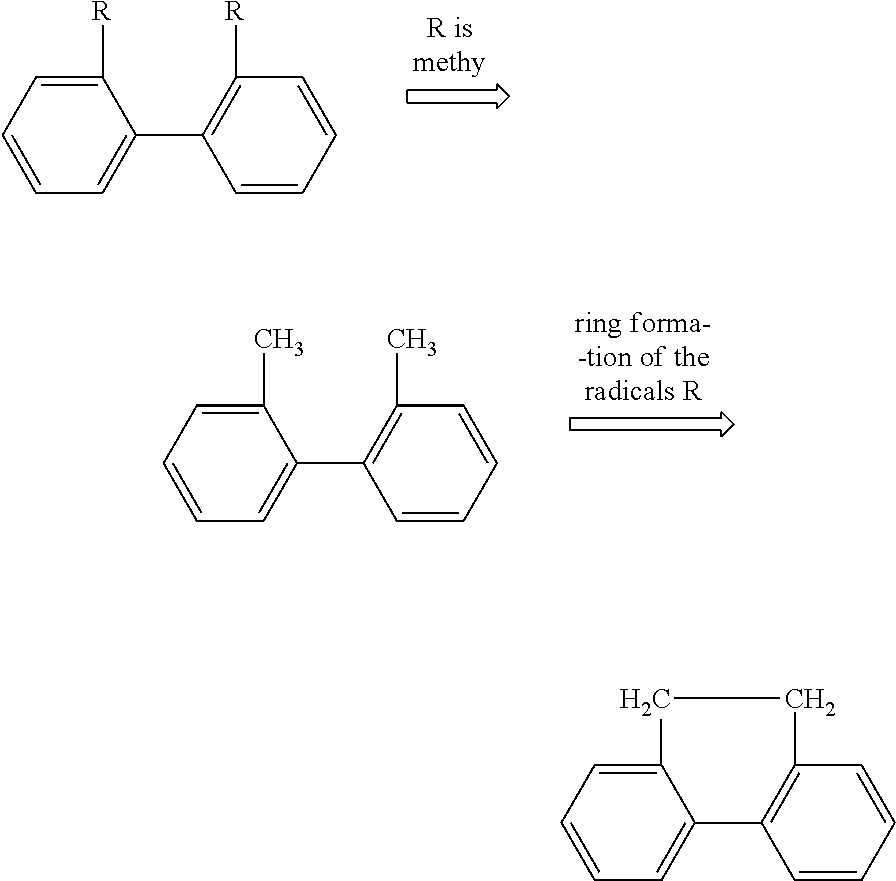









View All Diagrams
| United States Patent Application | 20190225635 |
| Kind Code | A1 |
| Xia; Chuanjun | July 25, 2019 |
METAL COMPLEXES CONTAINING SUBSTITUTED PYRIDINE LIGANDS
Abstract
Novel compounds with substituted pyridine ligands are disclosed, which can be used as emitters in an electroluminescent device. These novel complexes can provide highly saturated color and long lifetime, and good device performance. Also disclosed are an electroluminescent device and a formulation.
| Inventors: | Xia; Chuanjun; (Lawrenceville, NJ) | ||||||||||
| Applicant: |
|
||||||||||
|---|---|---|---|---|---|---|---|---|---|---|---|
| Family ID: | 67299171 | ||||||||||
| Appl. No.: | 16/251081 | ||||||||||
| Filed: | January 18, 2019 |
Related U.S. Patent Documents
| Application Number | Filing Date | Patent Number | ||
|---|---|---|---|---|
| 62619127 | Jan 19, 2018 | |||
| Current U.S. Class: | 1/1 |
| Current CPC Class: | H01L 51/0085 20130101; H01L 51/5016 20130101; C07F 15/0033 20130101; C07F 15/0086 20130101; H01L 51/0072 20130101; H01L 51/0067 20130101; H01L 51/0087 20130101; H01L 51/5012 20130101 |
| International Class: | C07F 15/00 20060101 C07F015/00; H01L 51/00 20060101 H01L051/00 |
Claims
1. A metal complex comprising a ligand L.sub.a represented by Formula 1: ##STR00286## wherein R.sub.4 independently represent mono, di, tri, tetra substitution, or no substitution; R.sub.1, R.sub.2, R.sub.3, and R.sub.4 are each independently selected from the group consisting of hydrogen, deuterium, halogen, a substituted or unsubstituted alkyl group having 1 to 20 carbon atoms, a substituted or unsubstituted cycloalkyl group having 3 to 20 ring carbon atoms, a substituted or unsubstituted heteroalkyl group having 1 to 20 carbon atoms, a substituted or unsubstituted arylalkyl group having 7 to 30 carbon atoms, a substituted or unsubstituted alkoxy group having 1 to 20 carbon atoms, a substituted or unsubstituted aryloxy group having 6 to 30 carbon atoms, a substituted or unsubstituted alkenyl group having 2 to 20 carbon atoms, a substituted or unsubstituted aryl group having 6 to 30 carbon atoms, a substituted or unsubstituted heteroaryl group having 3 to 30 carbon atoms, a substituted or unsubstituted alkylsilyl group having 3 to 20 carbon atoms, a substituted or unsubstituted arylsilyl group having 6 to 20 carbon atoms, a substituted or unsubstituted amino group having 0 to 20 carbon atoms, an acyl group, a carbonyl group, a carboxylic acid group, an ester group, a nitrile group, an isonitrile group, a sulfanyl group, a sulfinyl group, a sulfonyl group, a phosphino group, and combinations thereof; X is CRR' or NR''; R, R', and R'' are each independently selected from the group consisting of a substituted or unsubstituted alkyl group having 1 to 20 carbon atoms, a substituted or unsubstituted cycloalkyl group having 3 to 20 ring carbon atoms, a substituted or unsubstituted heteroalkyl group having 1 to 20 carbon atoms, a substituted or unsubstituted arylalkyl group having 7 to 30 carbon atoms, a substituted or unsubstituted alkoxy group having 1 to 20 carbon atoms, a substituted or unsubstituted aryloxy group having 6 to 30 carbon atoms, a substituted or unsubstituted alkenyl group having 2 to 20 carbon atoms, a substituted or unsubstituted aryl group having 6 to 30 carbon atoms, a substituted or unsubstituted heteroaryl group having 3 to 30 carbon atoms, a substituted or unsubstituted alkylsilyl group having 3 to 20 carbon atoms, a substituted or unsubstituted arylsilyl group having 6 to 20 carbon atoms, a substituted or unsubstituted amino group having 0 to 20 carbon atoms, an acyl group, a carbonyl group, a carboxylic acid group, an ester group, a nitrile group, an isonitrile group, a sulfanyl group, a sulfinyl group, a sulfonyl group, a phosphino group, and combinations thereof; two adjacent substituents are optionally joined to form a ring.
2. The metal complex of claim 1, wherein the metal is selected from the group consisting of Cu, Ag, Au, Ru, Rh, Pd, Pt, Os and Ir.
3. The metal complex of claim 1, wherein the metal is Ir or Pt.
4. The metal complex of claim 1, wherein the metal complex has the formula of M(L.sub.a).sub.m(L.sub.b).sub.n(L.sub.c).sub.q, wherein L.sub.b and L.sub.c are the second and third ligand coordinating to M, L.sub.b and L.sub.c can be the same of different; L.sub.a, L.sub.b, and L.sub.c can be optionally joined to form a multidentate ligand; Wherein m is 1, 2, or 3, n is 0, 1, or 2, q is 0, 1, or 2; m+n+q is the oxidation state of M; Wherein L.sub.b and L.sub.c are independently selected from the group consisting of: ##STR00287## Wherein R.sub.a, R.sub.b, and R.sub.c can represent mono, di, tri, or tetra substitution, or no substitution; R.sub.a, R.sub.b, and R.sub.c are each independently selected from the group consisting of hydrogen, deuterium, halogen, a substituted or unsubstituted alkyl group having 1 to 20 carbon atoms, a substituted or unsubstituted cycloalkyl group having 3 to 20 ring carbon atoms, a substituted or unsubstituted heteroalkyl group having 1 to 20 carbon atoms, a substituted or unsubstituted arylalkyl group having 7 to 30 carbon atoms, a substituted or unsubstituted alkoxy group having 1 to 20 carbon atoms, a substituted or unsubstituted aryloxy group having 6 to 30 carbon atoms, a substituted or unsubstituted alkenyl group having 2 to 20 carbon atoms, a substituted or unsubstituted aryl group having 6 to 30 carbon atoms, a substituted or unsubstituted heteroaryl group having 3 to 30 carbon atoms, a substituted or unsubstituted alkylsilyl group having 3 to 20 carbon atoms, a substituted or unsubstituted arylsilyl group having 6 to 20 carbon atoms, a substituted or unsubstituted amino group having 0 to 20 carbon atoms, an acyl group, a carbonyl group, a carboxylic acid group, an ester group, a nitrile group, an isonitrile group, a sulfanyl group, a sulfinyl group, a sulfonyl group, a phosphino group, and combinations thereof; X.sub.b is selected from the group consisting of O, S, Se, NR.sub.N1, and CR.sub.c1R.sub.c2, wherein R.sub.N1, R.sub.C1 and R.sub.C2 are each independently selected from the group consisting of hydrogen, deuterium, halogen, a substituted or unsubstituted alkyl group having 1 to 20 carbon atoms, a substituted or unsubstituted cycloalkyl group having 3 to 20 ring carbon atoms, a substituted or unsubstituted heteroalkyl group having 1 to 20 carbon atoms, a substituted or unsubstituted arylalkyl group having 7 to 30 carbon atoms, a substituted or unsubstituted alkoxy group having 1 to 20 carbon atoms, a substituted or unsubstituted aryloxy group having 6 to 30 carbon atoms, a substituted or unsubstituted alkenyl group having 2 to 20 carbon atoms, a substituted or unsubstituted aryl group having 6 to 30 carbon atoms, a substituted or unsubstituted heteroaryl group having 3 to 30 carbon atoms, a substituted or unsubstituted alkylsilyl group having 3 to 20 carbon atoms, a substituted or unsubstituted arylsilyl group having 6 to 20 carbon atoms, a substituted or unsubstituted amino group having 0 to 20 carbon atoms, an acyl group, a carbonyl group, a carboxylic acid group, an ester group, a nitrile group, an isonitrile group, a sulfanyl group, a sulfinyl group, a sulfonyl group, a phosphino group, and combinations thereof; two adjacent substituents are optionally joined to form a ring.
5. The metal complex of claim 4, wherein the metal complex has the formula of M(L.sub.a).sub.m(L.sub.b).sub.n, wherein L.sub.b is the second ligand coordinating to M; L.sub.a, and L.sub.b can be optionally joined to form a multidentate ligand; Wherein m is 1, 2, or 3, n is 1, or 2, m+n is the oxidation state of M; Wherein L.sub.b is independently selected from the group consisting of: ##STR00288## Wherein R.sub.a, R.sub.b, and R.sub.c can represent mono, di, tri, or tetra substitution or no substitution; R.sub.a, R.sub.b, and R.sub.c are each independently selected from the group consisting of hydrogen, deuterium, halogen, a substituted or unsubstituted alkyl group having 1 to 20 carbon atoms, a substituted or unsubstituted cycloalkyl group having 3 to 20 ring carbon atoms, a substituted or unsubstituted heteroalkyl group having 1 to 20 carbon atoms, a substituted or unsubstituted arylalkyl group having 7 to 30 carbon atoms, a substituted or unsubstituted alkoxy group having 1 to 20 carbon atoms, a substituted or unsubstituted aryloxy group having 6 to 30 carbon atoms, a substituted or unsubstituted alkenyl group having 2 to 20 carbon atoms, a substituted or unsubstituted aryl group having 6 to 30 carbon atoms, a substituted or unsubstituted heteroaryl group having 3 to 30 carbon atoms, a substituted or unsubstituted alkylsilyl group having 3 to 20 carbon atoms, a substituted or unsubstituted arylsilyl group having 6 to 20 carbon atoms, a substituted or unsubstituted amino group having 0 to 20 carbon atoms, an acyl group, a carbonyl group, a carboxylic acid group, an ester group, a nitrile group, an isonitrile group, a sulfanyl group, a sulfinyl group, a sulfonyl group, a phosphino group, and combinations thereof; X.sub.b is selected from the group consisting of O, S, Se, NR.sub.N1, and CR.sub.c1R.sub.c2, wherein R.sub.N1, R.sub.C1 and R.sub.C2 are each independently selected from the group consisting of hydrogen, deuterium, halogen, a substituted or unsubstituted alkyl group having 1 to 20 carbon atoms, a substituted or unsubstituted cycloalkyl group having 3 to 20 ring carbon atoms, a substituted or unsubstituted heteroalkyl group having 1 to 20 carbon atoms, a substituted or unsubstituted arylalkyl group having 7 to 30 carbon atoms, a substituted or unsubstituted alkoxy group having 1 to 20 carbon atoms, a substituted or unsubstituted aryloxy group having 6 to 30 carbon atoms, a substituted or unsubstituted alkenyl group having 2 to 20 carbon atoms, a substituted or unsubstituted aryl group having 6 to 30 carbon atoms, a substituted or unsubstituted heteroaryl group having 3 to 30 carbon atoms, a substituted or unsubstituted alkylsilyl group having 3 to 20 carbon atoms, a substituted or unsubstituted arylsilyl group having 6 to 20 carbon atoms, a substituted or unsubstituted amino group having 0 to 20 carbon atoms, an acyl group, a carbonyl group, a carboxylic acid group, an ester group, a nitrile group, an isonitrile group, a sulfanyl group, a sulfinyl group, a sulfonyl group, a phosphino group, and combinations thereof; two adjacent substituents are optionally joined to form a ring.
6. The metal complex of claim 5, wherein the metal complex has the formula of M(L.sub.a).sub.m(L.sub.b).sub.n, wherein L.sub.b is the second ligand coordinating to M; L.sub.a, and L.sub.b can be optionally joined to form a multidentate ligand; Wherein m is 1, 2, or 3, n is 1, or 2, m+n is the oxidation state of M; Wherein L.sub.b comprises the structure of Formula 2: ##STR00289## Wherein R.sub.a, and R.sub.b in Formula 2 can represent mono, di, tri, or tetra substitution or no substitution; R.sub.a, and R.sub.b in Formula 2 are each independently selected from the group consisting of hydrogen, deuterium, halogen, a substituted or unsubstituted alkyl group having 1 to 20 carbon atoms, a substituted or unsubstituted cycloalkyl group having 3 to 20 ring carbon atoms, a substituted or unsubstituted heteroalkyl group having 1 to 20 carbon atoms, a substituted or unsubstituted arylalkyl group having 7 to 30 carbon atoms, a substituted or unsubstituted alkoxy group having 1 to 20 carbon atoms, a substituted or unsubstituted aryloxy group having 6 to 30 carbon atoms, a substituted or unsubstituted alkenyl group having 2 to 20 carbon atoms, a substituted or unsubstituted aryl group having 6 to 30 carbon atoms, a substituted or unsubstituted heteroaryl group having 3 to 30 carbon atoms, a substituted or unsubstituted alkylsilyl group having 3 to 20 carbon atoms, a substituted or unsubstituted arylsilyl group having 6 to 20 carbon atoms, a substituted or unsubstituted amino group having 0 to 20 carbon atoms, an acyl group, a carbonyl group, a carboxylic acid group, an ester group, a nitrile group, an isonitrile group, a sulfanyl group, a sulfinyl group, a sulfonyl group, a phosphino group, and combinations thereof; two adjacent substituents are optionally joined to form a ring.
7. The metal complex of claim 6, wherein R.sub.1, R.sub.2, R.sub.3, R.sub.4, R.sub.a, and R.sub.b are each independently selected from the group consisting of hydrogen, deuterium, a substituted or unsubstituted alkyl group having 1 to 20 carbon atoms, a substituted or unsubstituted cycloalkyl group having 3 to 20 ring carbon atoms, a substituted or unsubstituted heteroalkyl group having 1 to 20 carbon atoms, and combinations thereof.
8. The metal complex of claim 6, wherein R.sub.2 is selected from the group consisting of hydrogen, deuterium, alkyl, cycloalkyl, deuterated alkyl, and deuterated cycloalkyl.
9. The metal complex of claim 6, wherein R.sub.1, R.sub.3, and R.sub.4 are hydrogen and R.sub.2 is selected from the group consisting of an alkyl group having 1 to 20 carbon atoms, a cycloalkyl group having 3 to 20 ring carbon atoms, a deuterated alkyl group having 1 to 20 carbon atoms, and a deuterated cycloalkyl group having 3 to 20 ring carbon atoms.
10. The metal complex of claim 6, wherein the complex has the formula of IrL.sub.a(L.sub.b).sub.2.
11. The metal complex of claim 10, wherein the ligand La is selected from any one of L.sub.a1 to L.sub.a278, the L.sub.a1 to L.sub.a278 comprise the structure of Formula 3: ##STR00290## wherein R.sub.1, R.sub.2, R.sub.3, and X in formula 3 are each selected from the group or the substances shown in the following table: TABLE-US-00003 L.sub.a Number R.sub.1 R.sub.2 R.sub.3 X 1. H H H C(CH.sub.3).sub.2 2. Methyl H H C(CH.sub.3).sub.2 3. Isopropyl H H C(CH.sub.3).sub.2 4. Isobutyl H H C(CH.sub.3).sub.2 5. t-Butyl H H C(CH.sub.3).sub.2 6. Neopentyl H H C(CH.sub.3).sub.2 7. ##STR00291## H H C(CH.sub.3).sub.2 8. ##STR00292## H H C(CH.sub.3).sub.2 9. ##STR00293## H H C(CH.sub.3).sub.2 10. ##STR00294## H H C(CH.sub.3).sub.2 11. Methyl-d3 H H C(CH.sub.3).sub.2 12. ##STR00295## H H C(CH.sub.3).sub.2 13. ##STR00296## H H C(CH.sub.3).sub.2 14. ##STR00297## H H C(CH.sub.3).sub.2 15. ##STR00298## H H C(CH.sub.3).sub.2 16. ##STR00299## H H C(CH.sub.3).sub.2 17. ##STR00300## H H C(CH.sub.3).sub.2 18. ##STR00301## H H C(CH.sub.3).sub.2 19. ##STR00302## H H C(CH.sub.3).sub.2 20. H Methyl H C(CH.sub.3).sub.2 21. H Isopropyl H C(CH.sub.3).sub.2 22. H Isobutyl H C(CH.sub.3).sub.2 23. H t-Butyl H C(CH.sub.3).sub.2 24. H Neopentyl H C(CH.sub.3).sub.2 25. H ##STR00303## H C(CH.sub.3).sub.2 26. H ##STR00304## H C(CH.sub.3).sub.2 27. H ##STR00305## H C(CH.sub.3).sub.2 28. H ##STR00306## H C(CH.sub.3).sub.2 29. H Methyl-d3 H C(CH.sub.3).sub.2 30. H ##STR00307## H C(CH.sub.3).sub.2 31. H ##STR00308## H C(CH.sub.3).sub.2 32. H ##STR00309## H C(CH.sub.3).sub.2 33. H ##STR00310## H C(CH.sub.3).sub.2 34. H ##STR00311## H C(CH.sub.3).sub.2 35. H ##STR00312## H C(CH.sub.3).sub.2 36. H ##STR00313## H C(CH.sub.3).sub.2 37. H ##STR00314## H C(CH.sub.3).sub.2 38. Methyl Methyl H C(CH.sub.3).sub.2 39. Methyl Isopropyl H C(CH.sub.3).sub.2 40. Methyl Isobutyl H C(CH.sub.3).sub.2 41. Methyl t-Butyl H C(CH.sub.3).sub.2 42. Methyl Neopentyl H C(CH.sub.3).sub.2 43. Methyl ##STR00315## H C(CH.sub.3).sub.2 44. Methyl ##STR00316## H C(CH.sub.3).sub.2 45. Methyl ##STR00317## H C(CH.sub.3).sub.2 46. Methyl ##STR00318## H C(CH.sub.3).sub.2 47. Methyl-d3 Methyl-d3 H C(CH.sub.3).sub.2 48. Methyl-d3 ##STR00319## H C(CH.sub.3).sub.2 49. Methyl-d3 ##STR00320## H C(CH.sub.3).sub.2 50. Methyl-d3 ##STR00321## H C(CH.sub.3).sub.2 51. Methyl-d3 ##STR00322## H C(CH.sub.3).sub.2 52. Methyl-d3 ##STR00323## H C(CH.sub.3).sub.2 53. Methyl-d3 ##STR00324## H C(CH.sub.3).sub.2 54. Methyl-d3 ##STR00325## H C(CH.sub.3).sub.2 55. Methyl-d3 ##STR00326## H C(CH.sub.3).sub.2 56. Isopropyl Methyl H C(CH.sub.3).sub.2 57. Isobutyl Methyl H C(CH.sub.3).sub.2 58. t-Butyl Methyl H C(CH.sub.3).sub.2 59. Neopentyl Methyl H C(CH.sub.3).sub.2 60. ##STR00327## Methyl H C(CH.sub.3).sub.2 61. ##STR00328## Methyl H C(CH.sub.3).sub.2 62. ##STR00329## Methyl H C(CH.sub.3).sub.2 63. ##STR00330## Methyl H C(CH.sub.3).sub.2 64. ##STR00331## Methyl-d3 H C(CH.sub.3).sub.2 65. ##STR00332## Methyl-d3 H C(CH.sub.3).sub.2 66. ##STR00333## Methyl-d3 H C(CH.sub.3).sub.2 67. ##STR00334## Methyl-d3 H C(CH.sub.3).sub.2 68. ##STR00335## Methyl-d3 H C(CH.sub.3).sub.2 69. ##STR00336## Methyl-d3 H C(CH.sub.3).sub.2 70. ##STR00337## Methyl-d3 H C(CH.sub.3).sub.2 71. ##STR00338## Methyl-d3 H C(CH.sub.3).sub.2 72. Methyl H Methyl C(CH.sub.3).sub.2 73. Isopropyl H Isopropyl C(CH.sub.3).sub.2 74. Isobutyl H Isobutyl C(CH.sub.3).sub.2 75. t-Butyl H t-Butyl C(CH.sub.3).sub.2 76. Neopentyl H Neopentyl C(CH.sub.3).sub.2 77. ##STR00339## H ##STR00340## C(CH.sub.3).sub.2 78. ##STR00341## H ##STR00342## C(CH.sub.3).sub.2 79. ##STR00343## H ##STR00344## C(CH.sub.3).sub.2 80. ##STR00345## H ##STR00346## C(CH.sub.3).sub.2 81. Methyl-d3 H Methyl-d3 C(CH.sub.3).sub.2 82. ##STR00347## H ##STR00348## C(CH.sub.3).sub.2 83. ##STR00349## H ##STR00350## C(CH.sub.3).sub.2 84. ##STR00351## H ##STR00352## C(CH.sub.3).sub.2 85. ##STR00353## H ##STR00354## C(CH.sub.3).sub.2 86. ##STR00355## H ##STR00356## C(CH.sub.3).sub.2 87. ##STR00357## H ##STR00358## C(CH.sub.3).sub.2 88. ##STR00359## H ##STR00360## C(CH.sub.3).sub.2 89. ##STR00361## H ##STR00362## C(CH.sub.3).sub.2 90. Methyl Methyl Methyl C(CH.sub.3).sub.2 91. Methyl-d3 Methyl-d3 Methyl-d3 C(CH.sub.3).sub.2 92. H H H ##STR00363## 93. H Methyl H ##STR00364## 94. Isopropyl H H ##STR00365## 95. Isobutyl H H ##STR00366## 96. t-Butyl H H ##STR00367## 97. Neopentyl H H ##STR00368## 98. H ##STR00369## H ##STR00370## 99. H ##STR00371## H ##STR00372## 100. H ##STR00373## H ##STR00374## 101. H ##STR00375## H ##STR00376## 102. H Methyl-d3 H ##STR00377## 103. H ##STR00378## H ##STR00379## 104. H ##STR00380## H ##STR00381## 105. H ##STR00382## H ##STR00383## 106. H ##STR00384## H ##STR00385## 107. H ##STR00386## H ##STR00387## 108. H ##STR00388## H ##STR00389## 109. H ##STR00390## H ##STR00391## 110. H ##STR00392## H ##STR00393## 111. H H H ##STR00394## 112. H Methyl H ##STR00395## 113. H Isopropyl H ##STR00396## 114. H Isobutyl H ##STR00397## 115. H t-Butyl H ##STR00398## 116. H Neopentyl H ##STR00399## 117. H ##STR00400## H ##STR00401## 118. H ##STR00402## H ##STR00403## 119. H ##STR00404## H ##STR00405## 120. H ##STR00406## H ##STR00407## 121. H Methyl-d3 H ##STR00408## 122. H ##STR00409## H ##STR00410## 123. H ##STR00411## H ##STR00412## 124. H ##STR00413## H ##STR00414## 125. H ##STR00415## H ##STR00416## 126. H ##STR00417## H ##STR00418## 127. H ##STR00419## H ##STR00420## 128. H ##STR00421## H ##STR00422## 129. H ##STR00423## H ##STR00424## 130. H H H C(CD.sub.3).sub.2 131. H Methyl-d3 H C(CD.sub.3).sub.2 132. H ##STR00425## H C(CD.sub.3).sub.2
133. H ##STR00426## H C(CD.sub.3).sub.2 134. H ##STR00427## H C(CD.sub.3).sub.2 135. H ##STR00428## H C(CD.sub.3).sub.2 136. H ##STR00429## H C(CD.sub.3).sub.2 137. H ##STR00430## H C(CD.sub.3).sub.2 138. H ##STR00431## H C(CD.sub.3).sub.2 139. H ##STR00432## H C(CD.sub.3).sub.2 140. H H H N(Isobutyl) 141. Methyl H H N(Isobutyl) 142. Isopropyl H H N(Isobutyl) 143. Isobutyl H H N(Isobutyl) 144. t-Butyl H H N(Isobutyl) 145. Neopentyl H H N(Isobutyl) 146. ##STR00433## H H N(Isobutyl) 147. ##STR00434## H H N(Isobutyl) 148. ##STR00435## H H N(Isobutyl) 149. ##STR00436## H H N(Isobutyl) 150. Methyl-d3 H H N(Isobutyl) 151. ##STR00437## H H N(Isobutyl) 152. ##STR00438## H H N(Isobutyl) 153. ##STR00439## H H N(Isobutyl) 154. ##STR00440## H H N(Isobutyl) 155. ##STR00441## H H N(Isobutyl) 156. ##STR00442## H H N(Isobutyl) 157. ##STR00443## H H N(Isobutyl) 158. ##STR00444## H H N(Isobutyl) 159. H Methyl H N(Isobutyl) 160. H Isopropyl H N(Isobutyl) 161. H Isobutyl H N(Isobutyl) 162. H t-Butyl H N(Isobutyl) 163. H Neopentyl H N(Isobutyl) 164. H ##STR00445## H N(Isobutyl) 165. H ##STR00446## H N(Isobutyl) 166. H ##STR00447## H N(Isobutyl) 167. H ##STR00448## H N(Isobutyl) 168. H Methyl-d3 H N(Isobutyl) 169. H ##STR00449## H N(Isobutyl) 170. H ##STR00450## H N(Isobutyl) 171. H ##STR00451## H N(Isobutyl) 172. H ##STR00452## H N(Isobutyl) 173. H ##STR00453## H N(Isobutyl) 174. H ##STR00454## H N(Isobutyl) 175. H ##STR00455## H N(Isobutyl) 176. H ##STR00456## H N(Isobutyl) 177. Methyl Methyl H N(Isobutyl) 178. Methyl Isopropyl H N(Isobutyl) 179. Methyl Isobutyl H N(Isobutyl) 180. Methyl t-Butyl H N(Isobutyl) 181. Methyl Neopentyl H N(Isobutyl) 182. Methyl ##STR00457## H N(Isobutyl) 183. Methyl ##STR00458## H N(Isobutyl) 184. Methyl ##STR00459## H N(Isobutyl) 185. Methyl ##STR00460## H N(Isobutyl) 186. Methyl-d3 Methyl-d3 H N(Isobutyl) 187. Methyl-d3 ##STR00461## H N(Isobutyl) 188. Methyl-d3 ##STR00462## H N(Isobutyl) 189. Methyl-d3 ##STR00463## H N(Isobutyl) 190. Methyl-d3 ##STR00464## H N(Isobutyl) 191. Methyl-d3 ##STR00465## H N(Isobutyl) 192. Methyl-d3 ##STR00466## H N(Isobutyl) 193. Methyl-d3 ##STR00467## H N(Isobutyl) 194. Methyl-d3 ##STR00468## H N(Isobutyl) 195. Isopropyl Methyl H N(Isobutyl) 196. Isobutyl Methyl H N(Isobutyl) 197. t-Butyl Methyl H N(Isobutyl) 198. Neopentyl Methyl H N(Isobutyl) 199. ##STR00469## Methyl H N(Isobutyl) 200. ##STR00470## Methyl H N(Isobutyl) 201. ##STR00471## Methyl H N(Isobutyl) 202. ##STR00472## Methyl H N(Isobutyl) 203. ##STR00473## Methyl-d3 H N(Isobutyl) 204. ##STR00474## Methyl-d3 H N(Isobutyl) 205. ##STR00475## Methyl-d3 H N(Isobutyl) 206. ##STR00476## Methyl-d3 H N(Isobutyl) 207. ##STR00477## Methyl-d3 H N(Isobutyl) 208. ##STR00478## Methyl-d3 H N(Isobutyl) 209. ##STR00479## Methyl-d3 H N(Isobutyl) 210. ##STR00480## Methyl-d3 H N(Isobutyl) 211. Methyl H Methyl N(Isobutyl) 212. Isopropyl H Isopropyl N(Isobutyl) 213. Isobutyl H Isobutyl N(Isobutyl) 214. t-Butyl H t-Butyl N(Isobutyl) 215. Neopentyl H Neopentyl N(Isobutyl) 216. ##STR00481## H ##STR00482## N(Isobutyl) 217. ##STR00483## H ##STR00484## N(Isobutyl) 218. ##STR00485## H ##STR00486## N(Isobutyl) 219. ##STR00487## H ##STR00488## N(Isobutyl) 220. Methyl-d3 H Methyl-d3 N(Isobutyl) 221. ##STR00489## H ##STR00490## N(Isobutyl) 222. ##STR00491## H ##STR00492## N(Isobutyl) 223. ##STR00493## H ##STR00494## N(Isobutyl) 224. ##STR00495## H ##STR00496## N(Isobutyl) 225. ##STR00497## H ##STR00498## N(Isobutyl) 226. ##STR00499## H ##STR00500## N(Isobutyl) 227. ##STR00501## H ##STR00502## N(Isobutyl) 228. ##STR00503## H ##STR00504## N(Isobutyl) 229. Methyl Methyl Methyl N(Isobutyl) 230. Methyl-d3 Methyl-d3 Methyl-d3 N(Isobutyl) 231. H H H N(Neopentyl) 232. H Methyl H N(Neopentyl) 233. H Isopropyl H N(Neopentyl) 234. H Isobutyl H N(Neopentyl) 235. H t-Butyl H N(Neopentyl) 236. H Neopentyl H N(Neopentyl) 237. H ##STR00505## H N(Neopentyl) 238. H ##STR00506## H N(Neopentyl) 239. H ##STR00507## H N(Neopentyl) 240. H ##STR00508## H N(Neopentyl) 241. H Methyl-d3 H N(Neopentyl) 242. H ##STR00509## H N(Neopentyl) 243. H ##STR00510## H N(Neopentyl) 244. H ##STR00511## H N(Neopentyl) 245. H ##STR00512## H N(Neopentyl) 246. H ##STR00513## H N(Neopentyl) 247. H ##STR00514## H N(Neopentyl) 248. H ##STR00515## H N(Neopentyl) 249. H ##STR00516## H N(Neopentyl) 250. H H H N(iPr) 251. H Methyl H N(iPr) 252. H Isopropyl H N(iPr) 253. H Isobutyl H N(iPr) 254. H t-Butyl H N(iPr) 255. H Neopentyl H N(iPr) 256. H ##STR00517## H N(iPr) 257. H ##STR00518## H N(iPr) 258. H ##STR00519## H N(iPr) 259. H ##STR00520## H N(iPr) 260. H Methyl-d3 H N(iPr) 261. H ##STR00521## H N(iPr) 262. H ##STR00522## H N(iPr) 263. H ##STR00523## H N(iPr) 264. H ##STR00524## H N(iPr) 265. H ##STR00525## H N(iPr) 266. H ##STR00526## H N(iPr) 267. H ##STR00527## H N(iPr) 268. H ##STR00528## H N(iPr) 269. H H H ##STR00529## 270. H Methyl-d3 H ##STR00530## 271. H ##STR00531## H ##STR00532## 272. H ##STR00533## H ##STR00534## 273. H ##STR00535## H ##STR00536## 274. H ##STR00537## H ##STR00538##
275. H ##STR00539## H ##STR00540## 276. H ##STR00541## H ##STR00542## 277. H ##STR00543## H ##STR00544## 278. H ##STR00545## H ##STR00546##
12. The metal complex of claim 10, wherein the ligand L.sub.b is selected from any one or any two of the group consisting of: ##STR00547## ##STR00548## ##STR00549## ##STR00550## ##STR00551## ##STR00552## ##STR00553##
13. An electroluminescent device comprises: an anode, a cathode, and an organic layer, disposed between the anode and the cathode, comprising a meal complex comprising a ligand L.sub.a represented by Formula 1: ##STR00554## wherein R.sub.4 independently represent mono, di, tri, tetra substitution, or no substitution; R.sub.1, R.sub.2, R.sub.3, and R.sub.4 are each independently selected from the group consisting of hydrogen, deuterium, halogen, a substituted or unsubstituted alkyl group having 1 to 20 carbon atoms, a substituted or unsubstituted cycloalkyl group having 3 to 20 ring carbon atoms, a substituted or unsubstituted heteroalkyl group having 1 to 20 carbon atoms, a substituted or unsubstituted arylalkyl group having 7 to 30 carbon atoms, a substituted or unsubstituted alkoxy group having 1 to 20 carbon atoms, a substituted or unsubstituted aryloxy group having 6 to 30 carbon atoms, a substituted or unsubstituted alkenyl group having 2 to 20 carbon atoms, a substituted or unsubstituted aryl group having 6 to 30 carbon atoms, a substituted or unsubstituted heteroaryl group having 3 to 30 carbon atoms, a substituted or unsubstituted alkylsilyl group having 3 to 20 carbon atoms, a substituted or unsubstituted arylsilyl group having 6 to 20 carbon atoms, a substituted or unsubstituted amino group having 0 to 20 carbon atoms, an acyl group, a carbonyl group, a carboxylic acid group, an ester group, a nitrile group, an isonitrile group, a sulfanyl group, a sulfinyl group, a sulfonyl group, a phosphino group, and combinations thereof; X is CRR' or NR''; R, R', and R'' are each independently selected from the group consisting of a substituted or unsubstituted alkyl group having 1 to 20 carbon atoms, a substituted or unsubstituted cycloalkyl group having 3 to 20 ring carbon atoms, a substituted or unsubstituted heteroalkyl group having 1 to 20 carbon atoms, a substituted or unsubstituted arylalkyl group having 7 to 30 carbon atoms, a substituted or unsubstituted alkoxy group having 1 to 20 carbon atoms, a substituted or unsubstituted aryloxy group having 6 to 30 carbon atoms, a substituted or unsubstituted alkenyl group having 2 to 20 carbon atoms, a substituted or unsubstituted aryl group having 6 to 30 carbon atoms, a substituted or unsubstituted heteroaryl group having 3 to 30 carbon atoms, a substituted or unsubstituted alkylsilyl group having 3 to 20 carbon atoms, a substituted or unsubstituted arylsilyl group having 6 to 20 carbon atoms, a substituted or unsubstituted amino group having 0 to 20 carbon atoms, an acyl group, a carbonyl group, a carboxylic acid group, an ester group, a nitrile group, an isonitrile group, a sulfanyl group, a sulfinyl group, a sulfonyl group, a phosphino group, and combinations thereof; two adjacent substituents are optionally joined to form a ring.
14. The device of claim 13, wherein the organic layer is the emissive layer and the metal complex is the emitter.
15. The device of claim 13, wherein the organic layer further comprises a host.
16. The device of claim 13, wherein the organic layer comprises at least two hosts.
17. The device of claim 15, wherein the host compound comprises at least one of the chemical groups selected from the group consisting of carbazole, azacarbazole, indolocarbazole, dibenzothiophene, dibenzofuran, triphenylene, naphthalene, phenanthrene, triazine, quinazoline, quinoxaline, azadibenzothiophene, azadibenzofuran and the combinations thereof.
18. The device of claim 16, wherein the host compound comprises at least one of the chemical groups selected from the group consisting of carbazole, azacarbazole, indolocarbazole, dibenzothiophene, dibenzofuran, triphenylene, naphthalene, phenanthrene, triazine, quinazoline, quinoxaline, azadibenzothiophene, azadibenzofuran and the combinations thereof.
19. A formulation comprises the metal complex of claim 1.
Description
[0001] This application claims the benefit of U.S. Provisional Application No. 62/619,127, filed Jan. 19, 2018, the entire content of which is incorporated herein by reference.
1 FIELD OF THE INVENTION
[0002] The present invention relates to a compound for organic electronic devices, such as organic light emitting devices. More specifically, the present invention relates to a compound containing substituted pyridine ligands structure, an organic electroluminescent device and a formulation comprising the compound.
2 BACKGROUND ART
[0003] An organic electronic device is preferably selected from the group consisting of organic light-emitting diodes (OLEDs), organic field-effect transistors (O-FETs), organic light-emitting transistors (OLETs), organic photovoltaic devices (OPVs), dye-sensitized solar cells (DSSCs), organic optical detectors, organic photoreceptors, organic field-quench devices (OFQDs), light-emitting electrochemical cells (LECs), organic laser diodes and organic plasmon emitting devices.
[0004] In 1987, Tang and Van Slyke of Eastman Kodak reported a bilayer organic electroluminescent device, which comprises an arylamine hole transporting layer and a tris-8-hydroxyquinolato-aluminum layer as the electron and emitting layer (Applied Physics Letters, 1987, 51 (12): 913-915). Once a bias is applied to the device, green light was emitted from the device. This invention laid the foundation for the development of modern organic light-emitting diodes (OLEDs). State-of-the-art OLEDs may comprise multiple layers such as charge injection and transporting layers, charge and exciton blocking layers, and one or multiple emissive layers between the cathode and anode. Since OLED is a self-emitting solid state device, it offers tremendous potential for display and lighting applications. In addition, the inherent properties of organic materials, such as their flexibility, may make them well suited for particular applications such as fabrication on flexible substrates.
[0005] OLED can be categorized as three different types according to its emitting mechanism. The OLED invented by Tang and van Slyke is a fluorescent OLED. It only utilizes singlet emission. The triplets generated in the device are wasted through nonradiative decay channels. Therefore, the internal quantum efficiency (IQE) of a fluorescent OLED is only 25%. This limitation hindered the commercialization of OLED. In 1997, Forrest and Thompson reported phosphorescent OLED, which uses triplet emission from heave metal containing complexes as the emitter. As a result, both singlet and triplets can be harvested, achieving 100% IQE. The discovery and development of phosphorescent OLED contributed directly to the commercialization of active-matrix OLED (AMOLED) due to its high efficiency. Recently, Adachi achieved high efficiency through thermally activated delayed fluorescence (TADF) of organic compounds. These emitters have small singlet-triplet gap that makes the transition from triplet back to singlet possible. In the TADF device, the triplet excitons can go through reverse intersystem crossing to generate singlet excitons, resulting in high IQE.
[0006] OLEDs can also be classified as small molecule and polymer OLEDs according to the forms of the materials used. Small molecule refers to any organic or organometallic material that is not a polymer. The molecular weight of a small molecule can be large as long as it has well defined structure. Dendrimers with well-defined structures are considered as small molecules. Polymer OLEDs include conjugated polymers and non-conjugated polymers with pendant emitting groups. Small molecule OLED can become a polymer OLED if post polymerization occurred during the fabrication process.
[0007] There are various methods for OLED fabrication. Small molecule OLEDs are generally fabricated by vacuum thermal evaporation. Polymer OLEDs are fabricated by solution process such as spin-coating, inkjet printing, and slit printing. If the material can be dissolved or dispersed in a solvent, the small molecule OLED can also be produced by solution process.
[0008] The emitting color of an OLED can be achieved by emitter structural design. An OLED may comprise one emitting layer or a plurality of emitting layers to achieve desired spectrum. In the case of green, yellow, and red OLEDs, phosphorescent emitters have successfully reached commercialization. Blue phosphorescent emitters still suffer from non-saturated blue color, short device lifetime, and high operating voltage. Commercial full-color OLED displays normally adopt a hybrid strategy, using fluorescent blue and phosphorescent yellow, or red and green. At present, efficiency roll-off of phosphorescent OLEDs at high brightness remains a problem. In addition, it is desirable to have more saturated emitting color, higher efficiency, and longer device lifetime.
[0009] As planar light source, OLEDs have the advantages of more evenly light emitting and higher color rendering index, and have better application prospects than the traditional LED in lighting. Generally, white OLED for lighting dope two light emitters of blue and orange yellow or three light emitters of red, green and blue in host materials, and obtain white light emission via the adjustment of the ratio of the materials therein. The emitting efficiency and lifetime are the most important parameters. The present invention introduce different structure units into the compounds to obtain light emission wavelength from yellow to red. The compounds are designed to have highly saturated color, long lifetime, high device efficiency, and can be used in white OLED.
3 SUMMARY OF THE INVENTION
[0010] The present invention aims to provide a new series of compounds with substituted pyridine and fluorene type structures to solve at least part of the above problems. The compounds can be used as emitters in an organic electroluminescent device. Due to the specific structures and groups of compounds, these novel compounds can offer the desired highly saturated color and long lifetime, and good device performance.
[0011] According to an embodiment of the present invention, a metal complex comprising a ligand L.sub.a represented by Formula 1 is disclosed:
##STR00001##
[0012] wherein
[0013] R.sub.4 independently represent mono, di, tri, tetra substitution, or no substitution;
[0014] R.sub.1, R.sub.2, R.sub.3, and R.sub.4 are each independently selected from the group consisting of hydrogen, deuterium, halogen, a substituted or unsubstituted alkyl group having 1 to 20 carbon atoms, a substituted or unsubstituted cycloalkyl group having 3 to 20 ring carbon atoms, a substituted or unsubstituted heteroalkyl group having 1 to 20 carbon atoms, a substituted or unsubstituted arylalkyl group having 7 to 30 carbon atoms, a substituted or unsubstituted alkoxy group having 1 to 20 carbon atoms, a substituted or unsubstituted aryloxy group having 6 to 30 carbon atoms, a substituted or unsubstituted alkenyl group having 2 to 20 carbon atoms, a substituted or unsubstituted aryl group having 6 to 30 carbon atoms, a substituted or unsubstituted heteroaryl group having 3 to 30 carbon atoms, a substituted or unsubstituted alkylsilyl group having 3 to 20 carbon atoms, a substituted or unsubstituted arylsilyl group having 6 to 20 carbon atoms, a substituted or unsubstituted amino group having 0 to 20 carbon atoms, an acyl group, a carbonyl group, a carboxylic acid group, an ester group, a nitrile group, an isonitrile group, a sulfanyl group, a sulfinyl group, a sulfonyl group, a phosphino group, and combinations thereof;
[0015] X is CRR' or NR'';
[0016] R, R', and R'' are each independently selected from the group consisting of a substituted or unsubstituted alkyl group having 1 to 20 carbon atoms, a substituted or unsubstituted cycloalkyl group having 3 to 20 ring carbon atoms, a substituted or unsubstituted heteroalkyl group having 1 to 20 carbon atoms, a substituted or unsubstituted arylalkyl group having 7 to 30 carbon atoms, a substituted or unsubstituted alkoxy group having 1 to 20 carbon atoms, a substituted or unsubstituted aryloxy group having 6 to 30 carbon atoms, a substituted or unsubstituted alkenyl group having 2 to 20 carbon atoms, a substituted or unsubstituted aryl group having 6 to 30 carbon atoms, a substituted or unsubstituted heteroaryl group having 3 to 30 carbon atoms, a substituted or unsubstituted alkylsilyl group having 3 to 20 carbon atoms, a substituted or unsubstituted arylsilyl group having 6 to 20 carbon atoms, a substituted or unsubstituted amino group having 0 to 20 carbon atoms, an acyl group, a carbonyl group, a carboxylic acid group, an ester group, a nitrile group, an isonitrile group, a sulfanyl group, a sulfinyl group, a sulfonyl group, a phosphino group, and combinations thereof;
[0017] two adjacent substituents are optionally joined to form a ring.
[0018] According to another embodiment, an electroluminescent device is disclosed, which comprises:
[0019] an anode,
[0020] a cathode,
[0021] and an organic layer, disposed between the anode and the cathode, comprising a metal complex comprising a ligand L.sub.a represented by Formula 1:
##STR00002##
[0022] wherein
[0023] R.sub.4 independently represent mono, di, tri, tetra substitution, or no substitution;
[0024] R.sub.1, R.sub.2, R.sub.3, and R.sub.4 are each independently selected from the group consisting of hydrogen, deuterium, halogen, a substituted or unsubstituted alkyl group having 1 to 20 carbon atoms, a substituted or unsubstituted cycloalkyl group having 3 to 20 ring carbon atoms, a substituted or unsubstituted heteroalkyl group having 1 to 20 carbon atoms, a substituted or unsubstituted arylalkyl group having 7 to 30 carbon atoms, a substituted or unsubstituted alkoxy group having 1 to 20 carbon atoms, a substituted or unsubstituted aryloxy group having 6 to 30 carbon atoms, a substituted or unsubstituted alkenyl group having 2 to 20 carbon atoms, a substituted or unsubstituted aryl group having 6 to 30 carbon atoms, a substituted or unsubstituted heteroaryl group having 3 to 30 carbon atoms, a substituted or unsubstituted alkylsilyl group having 3 to 20 carbon atoms, a substituted or unsubstituted arylsilyl group having 6 to 20 carbon atoms, a substituted or unsubstituted amino group having 0 to 20 carbon atoms, an acyl group, a carbonyl group, a carboxylic acid group, an ester group, a nitrile group, an isonitrile group, a sulfanyl group, a sulfinyl group, a sulfonyl group, a phosphino group, and combinations thereof;
[0025] X is CRR' or NR'';
[0026] R, R', and R'' are each independently selected from the group consisting of a substituted or unsubstituted alkyl group having 1 to 20 carbon atoms, a substituted or unsubstituted cycloalkyl group having 3 to 20 ring carbon atoms, a substituted or unsubstituted heteroalkyl group having 1 to 20 carbon atoms, a substituted or unsubstituted arylalkyl group having 7 to 30 carbon atoms, a substituted or unsubstituted alkoxy group having 1 to 20 carbon atoms, a substituted or unsubstituted aryloxy group having 6 to 30 carbon atoms, a substituted or unsubstituted alkenyl group having 2 to 20 carbon atoms, a substituted or unsubstituted aryl group having 6 to 30 carbon atoms, a substituted or unsubstituted heteroaryl group having 3 to 30 carbon atoms, a substituted or unsubstituted alkylsilyl group having 3 to 20 carbon atoms, a substituted or unsubstituted arylsilyl group having 6 to 20 carbon atoms, a substituted or unsubstituted amino group having 0 to 20 carbon atoms, an acyl group, a carbonyl group, a carboxylic acid group, an ester group, a nitrile group, an isonitrile group, a sulfanyl group, a sulfinyl group, a sulfonyl group, a phosphino group, and combinations thereof;
[0027] two adjacent substituents are optionally joined to form a ring.
[0028] According to yet another embodiment, a formulation comprising the metal complex is also disclosed.
[0029] The novel compounds with substituted pyridine and fluorene type structures disclosed in the present invention can be used as emitters in an electroluminescent device. These novel complexes can offer highly saturated color and long lifetime, and good device performance.
4 BRIEF DESCRIPTION OF THE DRAWINGS
[0030] FIG. 1 schematically shows an organic light emitting device that can incorporate the metal complex or the formulation disclosed herein.
[0031] FIG. 2 schematically shows another organic light emitting device that can incorporate the metal complex or the formulation disclosed herein.
[0032] FIG. 3 shows the formula 1 of a ligand L.sub.a contained in the metal complexed disclosed herein.
[0033] FIG. 4 shows the formula 2 of a ligand L.sub.b contained in the metal complexed disclosed herein.
5 DETAILED DESCRIPTION
[0034] OLEDs can be fabricated on various types of substrates such as glass, plastic, and metal foil. FIG. 1 schematically shows the organic light emitting device 100 without limitation. The figures are not necessarily drawn to scale. Some of the layer in the figure can also be omitted as needed. Device 100 may include a substrate 101, an anode 110, a hole injection layer 120, a hole transport layer 130, an electron blocking layer 140, an emissive layer 150, a hole blocking layer 160, an electron transport layer 170, an electron injection layer 180 and a cathode 190. Device 100 may be fabricated by depositing the layers described in order. The properties and functions of these various layers, as well as example materials, are described in more detail in U.S. Pat. No. 7,279,704 at cols. 6-10, which are incorporated by reference in its entirety.
[0035] More examples for each of these layers are available. For example, a flexible and transparent substrate-anode combination is disclosed in U.S. Pat. No. 5,844,363, which is incorporated by reference in its entirety. An example of a p-doped hole transport layer is m-MTDATA doped with F4-TCNQ at a molar ratio of 50:1, as disclosed in U.S. Patent Application Publication No. 2003/0230980, which is incorporated by reference in its entirety. Examples of host materials are disclosed in U.S. Pat. No. 6,303,238 to Thompson et al., which is incorporated by reference in its entirety. An example of an n-doped electron transport layer is BPhen doped with Li at a molar ratio of 1:1, as disclosed in U.S. Patent Application Publication No. 2003/0230980, which is incorporated by reference in its entirety. U.S. Pat. Nos. 5,703,436 and 5,707,745, which are incorporated by reference in their entireties, disclose examples of cathodes including compound cathodes having a thin layer of metal such as Mg:Ag with an overlying transparent, electrically-conductive, sputter-deposited ITO layer. The theory and use of blocking layers is described in more detail in U.S. Pat. No. 6,097,147 and U.S. Patent Application Publication No. 2003/0230980, which are incorporated by reference in their entireties. Examples of injection layers are provided in U.S. Patent Application Publication No. 2004/0174116, which is incorporated by reference in its entirety. A description of protective layers may be found in U.S. Patent Application Publication No. 2004/0174116, which is incorporated by reference in its entirety.
[0036] The layered structure described above is provided by way of non-limiting example. Functional OLEDs may be achieved by combining the various layers described in different ways, or layers may be omitted entirely. It may also include other layers not specifically described. Within each layer, a single material or a mixture of multiple materials can be used to achieve optimum performance. Any functional layer may include several sublayers. For example, the emissive layer may have a two layers of different emitting materials to achieve desired emission spectrum.
[0037] The layered structure described above is provided by way of non-limiting example. Functional OLEDs may be achieved by combining the various layers described in different ways, or layers may be omitted entirely. It may also include other layers not specifically described. Within each layer, a single material or a mixture of multiple materials can be used to achieve optimum performance. Any functional layer may include several sublayers. For example, the emissive layer may have a two layers of different emitting materials to achieve desired emission spectrum. Also for example, the hole transporting layer may comprise the first hole transporting layer and the second hole transporting layer.
[0038] In one embodiment, an OLED may be described as having an "organic layer" disposed between a cathode and an anode. This organic layer may comprise a single layer or multiple layers.
[0039] An OLED can be encapsulated by a barrier layer to protect it from harmful species from the environment such as moisture and oxygen. FIG. 2 schematically shows the organic light emitting device 200 without limitation. FIG. 2 differs from FIG. 1 in that the organic light emitting device 200 include a barrier layer 102, which is above the cathode 190. Any material that can provide the barrier function can be used as the barrier layer such as glass and organic-inorganic hybrid layers. The barrier layer should be placed directly or indirectly outside of the OLED device. Multilayer thin film encapsulation was described in U.S. Pat. No. 7,968,146, which is herein incorporated by reference in its entirety.
[0040] Devices fabricated in accordance with embodiments of the invention can be incorporated into a wide variety of consumer products that have one or more of the electronic component modules (or units) incorporated therein. Some examples of such consumer products include flat panel displays, monitors, medical monitors, televisions, billboards, lights for interior or exterior illumination and/or signaling, heads-up displays, fully or partially transparent displays, flexible displays, smart phones, tablets, phablets, wearable devices, smart watches, laptop computers, digital cameras, camcorders, viewfinders, micro-displays, 3-D displays, vehicles displays, and vehicle tail lights.
[0041] The materials and structures described herein may be used in other organic electronic devices listed above.
[0042] As used herein, "top" means furthest away from the substrate, while "bottom" means closest to the substrate. Where a first layer is described as "disposed over" a second layer, the first layer is disposed further away from substrate. There may be other layers between the first and second layer, unless it is specified that the first layer is "in contact with" the second layer. For example, a cathode may be described as "disposed over" an anode, even though there are various organic layers in between.
[0043] As used herein, "solution processable" means capable of being dissolved, dispersed, or transported in and/or deposited from a liquid medium, either in solution or suspension form.
[0044] A ligand may be referred to as "photoactive" when it is believed that the ligand directly contributes to the photoactive properties of an emissive material. A ligand may be referred to as "ancillary" when it is believed that the ligand does not contribute to the photoactive properties of an emissive material, although an ancillary ligand may alter the properties of a photoactive ligand.
[0045] It is believed that the internal quantum efficiency (IQE) of fluorescent OLEDs can exceed the 25% spin statistics limit through delayed fluorescence. As used herein, there are two types of delayed fluorescence, i.e. P-type delayed fluorescence and E-type delayed fluorescence. P-type delayed fluorescence is generated from triplet-triplet annihilation (TTA).
[0046] On the other hand, E-type delayed fluorescence does not rely on the collision of two triplets, but rather on the transition between the triplet states and the singlet excited states. Compounds that are capable of generating E-type delayed fluorescence are required to have very small singlet-triplet gaps to convert between energy states. Thermal energy can activate the transition from the triplet state back to the singlet state. This type of delayed fluorescence is also known as thermally activated delayed fluorescence (TADF). A distinctive feature of TADF is that the delayed component increases as temperature rises. If the reverse intersystem crossing rate is fast enough to minimize the non-radiative decay from the triplet state, the fraction of back populated singlet excited states can potentially reach 75%. The total singlet fraction can be 100%, far exceeding 25% of the spin statistics limit for electrically generated excitons.
[0047] E-type delayed fluorescence characteristics can be found in an exciplex system or in a single compound. Without being bound by theory, it is believed that E-type delayed fluorescence requires the luminescent material to have a small singlet-triplet energy gap (.DELTA.E.sub.S-T). Organic, non-metal containing, donor-acceptor luminescent materials may be able to achieve this. The emission in these materials is often characterized as a donor-acceptor charge-transfer (CT) type emission. The spatial separation of the HOMO and LUMO in these donor-acceptor type compounds often results in small .DELTA.E.sub.S-T. These states may involve CT states. Often, donor-acceptor luminescent materials are constructed by connecting an electron donor moiety such as amino- or carbazole-derivatives and an electron acceptor moiety such as N-containing six-membered aromatic rings.
Definition of Terms of Substituents
[0048] halogen or halide--as used herein includes fluorine, chlorine, bromine, and iodine.
[0049] Alkyl--contemplates both straight and branched chain alkyl groups. Examples of the alkyl group include methyl group, ethyl group, propyl group, isopropyl group, n-butyl group, s-butyl group, isobutyl group, t-butyl group, n-pentyl group, n-hexyl group, n-heptyl group, n-octyl group, n-nonyl group, n-decyl group, n-undecyl group, n-dodecyl group, n-tridecyl group, n-tetradecyl group, n-pentadecyl group, n-hexadecyl group, n-heptadecyl group, n-octadecyl group, neopentyl group, 1-methylpentyl group, 2-methylpentyl group, 1-pentylhexyl group, 1-butylpentyl group, 1-heptyloctyl group, 3-methylpentyl group. Additionally, the alkyl group may be optionally substituted. The carbons in the alkyl chain can be replaced by other hetero atoms. Of the above, preferred are methyl group, ethyl group, propyl group, isopropyl group, n-butyl group, s-butyl group, isobutyl group, t-butyl group, n-pentyl group, and neopentyl group.
[0050] Cycloalkyl--as used herein contemplates cyclic alkyl groups. Preferred cycloalkyl groups are those containing 4 to 10 ring carbon atoms and includes cyclobutyl, cyclopentyl, cyclohexyl, 4-methylcyclohexyl, 4,4-dimethylcylcohexyl, 1-adamantyl, 2-adamantyl, 1-norbornyl, 2-norbornyl and the like. Additionally, the cycloalkyl group may be optionally substituted. The carbons in the ring can be replaced by other hetero atoms.
[0051] Alkenyl--as used herein contemplates both straight and branched chain alkene groups. Preferred alkenyl groups are those containing two to fifteen carbon atoms. Examples of the alkenyl group include vinyl group, allyl group, 1-butenyl group, 2-butenyl group, 3-butenyl group, 1,3-butandienyl group, 1-methylvinyl group, styryl group, 2,2-diphenylvinyl group, 1,2-diphenylvinyl group, 1-methylallyl group, 1,1-dimethylallyl group, 2-methylallyl group, 1-phenylallyl group, 2-phenylallyl group, 3-phenylallyl group, 3,3-diphenylallyl group, 1,2-dimethylallyl group, 1-phenyll-butenyl group, and 3-phenyl-1-butenyl group. Additionally, the alkenyl group may be optionally substituted.
[0052] Alkynyl--as used herein contemplates both straight and branched chain alkyne groups. Preferred alkynyl groups are those containing two to fifteen carbon atoms. Additionally, the alkynyl group may be optionally substituted.
[0053] Aryl or aromatic group--as used herein contemplates noncondensed and condensed systems. Preferred aryl groups are those containing six to sixty carbon atoms, preferably six to twenty carbon atoms, more preferably six to twelve carbon atoms. Examples of the aryl group include phenyl, biphenyl, terphenyl, triphenylene, tetraphenylene, naphthalene, anthracene, phenalene, phenanthrene, fluorene, pyrene, chrysene, perylene, and azulene, preferably phenyl, biphenyl, terphenyl, triphenylene, fluorene, and naphthalene. Additionally, the aryl group may be optionally substituted. Examples of the non-condensed aryl group include phenyl group, biphenyl-2-yl group, biphenyl-3-yl group, biphenyl-4-yl group, p-terphenyl-4-yl group, p-terphenyl-3-yl group, p-terphenyl-2-yl group, m-terphenyl-4-yl group, m-terphenyl-3-yl group, m-terphenyl-2-yl group, o-tolyl group, m-tolyl group, p-tolyl group, p-t-butylphenyl group, p-(2-phenylpropyl)phenyl group, 4'-methylbiphenylyl group, 4''-t-butyl p-terphenyl-4-yl group, o-cumenyl group, m-cumenyl group, p-cumenyl group, 2,3-xylyl group, 3,4-xylyl group, 2,5-xylyl group, mesityl group, and m-quarterphenyl group.
[0054] Heterocyclic group or heterocycle--as used herein contemplates aromatic and non-aromatic cyclic groups. Hetero-aromatic also means heteroaryl. Preferred non-aromatic heterocyclic groups are those containing 3 to 7 ring atoms which includes at least one hetero atom such as nitrogen, oxygen, and sulfur. The heterocyclic group can also be an aromatic heterocyclic group having at least one heteroatom selected from nitrogen atom, oxygen atom, sulfur atom, and selenium atom.
[0055] Heteroaryl--as used herein contemplates noncondensed and condensed hetero-aromatic groups that may include from one to five heteroatoms. Preferred heteroaryl groups are those containing three to thirty carbon atoms, preferably three to twenty carbon atoms, more preferably three to twelve carbon atoms. Suitable heteroaryl groups include dibenzothiophene, dibenzofuran, dibenzoselenophene, furan, thiophene, benzofuran, benzothiophene, benzoselenophene, carbazole, indolocarbazole, pyridylindole, pyrrolodipyridine, pyrazole, imidazole, triazole, oxazole, thiazole, oxadiazole, oxatriazole, dioxazole, thiadiazole, pyridine, pyridazine, pyrimidine, pyrazine, triazine, oxazine, oxathiazine, oxadiazine, indole, benzimidazole, indazole, indoxazine, benzoxazole, benzisoxazole, benzothiazole, quinoline, isoquinoline, cinnoline, quinazoline, quinoxaline, naphthyridine, phthalazine, pteridine, xanthene, acridine, phenazine, phenothiazine, phenoxazine, benzofuropyridine, furodipyridine, benzothienopyridine, thienodipyridine, benzoselenophenopyridine, and selenophenodipyridine, preferably dibenzothiophene, dibenzofuran, dibenzoselenophene, carbazole, indolocarbazole, imidazole, pyridine, triazine, benzimidazole, 1,2-azaborine, 1,3-azaborine, 1,4-azaborine, borazine, and aza-analogs thereof. Additionally, the heteroaryl group may be optionally substituted.
[0056] Alkoxy--it is represented by --O-Alkyl. Examples and preferred examples thereof are the same as those described above. Examples of the alkoxy group having 1 to 20 carbon atoms, preferably 1 to 6 carbon atoms include methoxy group, ethoxy group, propoxy group, butoxy group, pentyloxy group, and hexyloxy group. The alkoxy group having 3 or more carbon atoms may be linear, cyclic or branched.
[0057] Aryloxy--it is represented by --O-Aryl or --O-heteroaryl. Examples and preferred examples thereof are the same as those described above. Examples of the aryloxy group having 6 to 40 carbon atoms include phenoxy group and biphenyloxy group.
[0058] Arylalkyl--as used herein contemplates an alkyl group that has an aryl substituent. Additionally, the arylalkyl group may be optionally substituted. Examples of the arylalkyl group include benzyl group, 1-phenylethyl group, 2-phenylethyl group, 1-phenylisopropyl group, 2-phenylisopropyl group, phenyl-t-butyl group, alpha.-naphthylmethyl group, 1-alpha.-naphthylethyl group, 2-alpha-naphthylethyl group, 1-alpha-naphthylisopropyl group, 2-alpha-naphthylisopropyl group, beta-naphthylmethyl group, 1-beta-naphthylethyl group, 2-beta-naphthylethyl group, 1-beta-naphthylisopropyl group, 2-beta-naphthylisopropyl group, p-methylbenzyl group, m-methylbenzyl group, o-methylbenzyl group, p-chlorobenzyl group, m-chlorobenzyl group, o-chlorobenzyl group, p-bromobenzyl group, m-bromobenzyl group, o-bromobenzyl group, p-iodobenzyl group, m-iodobenzyl group, o-iodobenzyl group, p-hydroxybenzyl group, m-hydroxybenzyl group, o-hydroxybenzyl group, p-aminobenzyl group, m-aminobenzyl group, o-aminobenzyl group, p-nitrobenzyl group, m-nitrobenzyl group, o-nitrobenzyl group, p-cyanobenzyl group, m-cyanobenzyl group, o-cyanobenzyl group, 1-hydroxy-2-phenylisopropyl group, and 1-chloro2-phenylisopropyl group. Of the above, preferred are benzyl group, p-cyanobenzyl group, m-cyanobenzyl group, o-cyanobenzyl group, 1-phenylethyl group, 2-phenylethyl group, 1-phenylisopropyl group, and 2-phenylisopropyl group.
[0059] The term "aza" in azadibenzofuran, aza-dibenzothiophene, etc. means that one or more of the C--H groups in the respective aromatic fragment are replaced by a nitrogen atom. For example, azatriphenylene encompasses dibenzo[f,h]quinoxaline,dibenzo[f,h]quinoline and other analogues with two or more nitrogens in the ring system. One of ordinary skill in the art can readily envision other nitrogen analogs of the aza-derivatives described above, and all such analogs are intended to be encompassed by the terms as set forth herein.
[0060] The alkyl, cycloalkyl, alkenyl, alkynyl, aralkyl, heterocyclic group, aryl, and heteroaryl may be unsubstituted or may be substituted with one or more substituents selected from the group consisting of deuterium, halogen, alkyl, cycloalkyl, arylalkyl, alkoxy, aryloxy, amino, cyclic amino, silyl, alkenyl, cycloalkenyl, heteroalkenyl, alkynyl, aryl, heteroaryl, an acyl group, a carbonyl group, a carboxylic acid group, an ether group, an ester group, a nitrile group, an isonitrile group, a sulfanyl group, a sulfinyl group, a sulfonyl group, a phosphino group, and combinations thereof.
[0061] It is to be understood that when a molecular fragment is described as being a substituent or otherwise attached to another moiety, its name may be written as if it were a fragment (e.g. phenyl, phenylene, naphthyl, dibenzofuryl) or as if it were the whole molecule (e.g. benzene, naphthalene, dibenzofuran). As used herein, these different ways of designating a substituent or attached fragment are considered to be equivalent.
[0062] In the compounds mentioned in this disclosure, the hydrogen atoms can be partially or fully replaced by deuterium. Other atoms such as carbon and nitrogen, can also be replaced by their other stable isotopes. The replacement by other stable isotopes in the compounds may be preferred due to its enhancements of device efficiency and stability.
[0063] In the compounds mentioned in this disclosure, multiple substitutions refer to a range that includes a double substitution, up to the maximum available substitutions. When some substituent of the compound mentioned in this disclosure represent multiple substitutions (including double substitution, triple substitution, tetra substitution, and etc.), it refers that the substituent can exist at multiple substitutable positions, and the substituents existing at the multiple substitutable positions can have the same structures or different structures.
[0064] In the compounds mentioned in this disclosure, the expression that adjacent substituents are optionally joined to form a ring is intended to be taken to mean that two radicals are linked to each other by a chemical bond. This is illustrated by the following scheme:
##STR00003##
[0065] Furthermore, the expression that adjacent substituents are optionally joined to form a ring is also intended to be taken to mean that in the case where one of the two radicals represents hydrogen, the second radical is bonded at a position to which the hydrogen atom was bonded, with formation of a ring. This is illustrated by the following scheme:
##STR00004##
[0066] According to an embodiment of the present invention, a metal complex comprising a ligand L.sub.a represented by Formula 1 is disclosed:
##STR00005##
[0067] wherein
[0068] R.sub.4 independently represent mono, di, tri, tetra substitution, or no substitution;
[0069] R.sub.1, R.sub.2, R.sub.3, and R.sub.4 are each independently selected from the group consisting of hydrogen, deuterium, halogen, a substituted or unsubstituted alkyl group having 1 to 20 carbon atoms, a substituted or unsubstituted cycloalkyl group having 3 to 20 ring carbon atoms, a substituted or unsubstituted heteroalkyl group having 1 to 20 carbon atoms, a substituted or unsubstituted arylalkyl group having 7 to 30 carbon atoms, a substituted or unsubstituted alkoxy group having 1 to 20 carbon atoms, a substituted or unsubstituted aryloxy group having 6 to 30 carbon atoms, a substituted or unsubstituted alkenyl group having 2 to 20 carbon atoms, a substituted or unsubstituted aryl group having 6 to 30 carbon atoms, a substituted or unsubstituted heteroaryl group having 3 to 30 carbon atoms, a substituted or unsubstituted alkylsilyl group having 3 to 20 carbon atoms, a substituted or unsubstituted arylsilyl group having 6 to 20 carbon atoms, a substituted or unsubstituted amino group having 0 to 20 carbon atoms, an acyl group, a carbonyl group, a carboxylic acid group, an ester group, a nitrile group, an isonitrile group, a sulfanyl group, a sulfinyl group, a sulfonyl group, a phosphino group, and combinations thereof;
[0070] X is CRR' or NR'';
[0071] R, R', and R'' are each independently selected from the group consisting of a substituted or unsubstituted alkyl group having 1 to 20 carbon atoms, a substituted or unsubstituted cycloalkyl group having 3 to 20 ring carbon atoms, a substituted or unsubstituted heteroalkyl group having 1 to 20 carbon atoms, a substituted or unsubstituted arylalkyl group having 7 to 30 carbon atoms, a substituted or unsubstituted alkoxy group having 1 to 20 carbon atoms, a substituted or unsubstituted aryloxy group having 6 to 30 carbon atoms, a substituted or unsubstituted alkenyl group having 2 to 20 carbon atoms, a substituted or unsubstituted aryl group having 6 to 30 carbon atoms, a substituted or unsubstituted heteroaryl group having 3 to 30 carbon atoms, a substituted or unsubstituted alkylsilyl group having 3 to 20 carbon atoms, a substituted or unsubstituted arylsilyl group having 6 to 20 carbon atoms, a substituted or unsubstituted amino group having 0 to 20 carbon atoms, an acyl group, a carbonyl group, a carboxylic acid group, an ester group, a nitrile group, an isonitrile group, a sulfanyl group, a sulfinyl group, a sulfonyl group, a phosphino group, and combinations thereof;
[0072] two adjacent substituents are optionally joined to form a ring.
[0073] According to an embodiment of the present invention, wherein the metal is selected from the group consisting of Cu, Ag, Au, Ru, Rh, Pd, Pt, Os, and Ir.
[0074] According to an embodiment of the present invention, wherein the metal is Ir or Pt.
[0075] According to an embodiment of the present invention, wherein the metal complex has the formula of M(L.sub.a).sub.m(L.sub.b).sub.n(L.sub.c).sub.q, wherein L.sub.b and L.sub.c are the second and third ligand coordinating to M, L.sub.b and L.sub.c can be the same of different;
[0076] L.sub.a, L.sub.b, and L.sub.c can be optionally joined to form a multidentate ligand;
[0077] Wherein m is 1, 2, or 3, n is 0, 1, or 2, q is 0, 1, or 2; m+n+q is the oxidation state of M;
[0078] Wherein L.sub.b and L.sub.c are independently selected from the group consisting of:
##STR00006##
[0079] Wherein
[0080] R.sub.a, R.sub.b, and R.sub.c can represent mono, di, tri, or tetra substitution or no substitution;
[0081] R.sub.a, R.sub.b, and R.sub.c are each independently selected from the group consisting of hydrogen, deuterium, halogen, a substituted or unsubstituted alkyl group having 1 to 20 carbon atoms, a substituted or unsubstituted cycloalkyl group having 3 to 20 ring carbon atoms, a substituted or unsubstituted heteroalkyl group having 1 to 20 carbon atoms, a substituted or unsubstituted arylalkyl group having 7 to 30 carbon atoms, a substituted or unsubstituted alkoxy group having 1 to 20 carbon atoms, a substituted or unsubstituted aryloxy group having 6 to 30 carbon atoms, a substituted or unsubstituted alkenyl group having 2 to 20 carbon atoms, a substituted or unsubstituted aryl group having 6 to 30 carbon atoms, a substituted or unsubstituted heteroaryl group having 3 to 30 carbon atoms, a substituted or unsubstituted alkylsilyl group having 3 to 20 carbon atoms, a substituted or unsubstituted arylsilyl group having 6 to 20 carbon atoms, a substituted or unsubstituted amino group having 0 to 20 carbon atoms, an acyl group, a carbonyl group, a carboxylic acid group, an ester group, a nitrile group, an isonitrile group, a sulfanyl group, a sulfinyl group, a sulfonyl group, a phosphino group, and combinations thereof;
[0082] X.sub.b is selected from O, S, Se, NR.sub.N1, or CR.sub.C1R.sub.C2,
[0083] wherein R.sub.N1, R.sub.C1 and R.sub.C2 are each independently selected from the group consisting of hydrogen, deuterium, halogen, a substituted or unsubstituted alkyl group having 1 to 20 carbon atoms, a substituted or unsubstituted cycloalkyl group having 3 to 20 ring carbon atoms, a substituted or unsubstituted heteroalkyl group having 1 to 20 carbon atoms, a substituted or unsubstituted arylalkyl group having 7 to 30 carbon atoms, a substituted or unsubstituted alkoxy group having 1 to 20 carbon atoms, a substituted or unsubstituted aryloxy group having 6 to 30 carbon atoms, a substituted or unsubstituted alkenyl group having 2 to 20 carbon atoms, a substituted or unsubstituted aryl group having 6 to 30 carbon atoms, a substituted or unsubstituted heteroaryl group having 3 to 30 carbon atoms, a substituted or unsubstituted alkylsilyl group having 3 to 20 carbon atoms, a substituted or unsubstituted arylsilyl group having 6 to 20 carbon atoms, a substituted or unsubstituted amino group having 0 to 20 carbon atoms, an acyl group, a carbonyl group, a carboxylic acid group, an ester group, a nitrile group, an isonitrile group, a sulfanyl group, a sulfinyl group, a sulfonyl group, a phosphino group, and combinations thereof;
[0084] two adjacent substituents are optionally joined to form a ring.
[0085] According to an embodiment of the present invention, wherein the metal complex has the formula of M(L.sub.a).sub.m(L.sub.b).sub.n, wherein L.sub.b is the second ligand coordinating to M;
[0086] La, and L.sub.b can be optionally joined to form a multidentate ligand;
[0087] Wherein m is 1, 2, or 3, n is 0, 1, or 2, m+n is the oxidation state of M;
[0088] Wherein L.sub.b is independently selected from the group consisting of:
##STR00007##
[0089] Wherein
[0090] R.sub.a, R.sub.b, and R.sub.c can represent mono, di, tri, or tetra substitution or no substitution;
[0091] R.sub.a, R.sub.b, and R.sub.c are each independently selected from the group consisting of hydrogen, deuterium, halogen, a substituted or unsubstituted alkyl group having 1 to 20 carbon atoms, a substituted or unsubstituted cycloalkyl group having 3 to 20 ring carbon atoms, a substituted or unsubstituted heteroalkyl group having 1 to 20 carbon atoms, a substituted or unsubstituted arylalkyl group having 7 to 30 carbon atoms, a substituted or unsubstituted alkoxy group having 1 to 20 carbon atoms, a substituted or unsubstituted aryloxy group having 6 to 30 carbon atoms, a substituted or unsubstituted alkenyl group having 2 to 20 carbon atoms, a substituted or unsubstituted aryl group having 6 to 30 carbon atoms, a substituted or unsubstituted heteroaryl group having 3 to 30 carbon atoms, a substituted or unsubstituted alkylsilyl group having 3 to 20 carbon atoms, a substituted or unsubstituted arylsilyl group having 6 to 20 carbon atoms, a substituted or unsubstituted amino group having 0 to 20 carbon atoms, an acyl group, a carbonyl group, a carboxylic acid group, an ester group, a nitrile group, an isonitrile group, a sulfanyl group, a sulfinyl group, a sulfonyl group, a phosphino group, and combinations thereof;
[0092] X.sub.b is selected from the group consisting of O, S, Se, NR.sub.N1, and CR.sub.C1R.sub.C2,
[0093] wherein R.sub.N1, R.sub.C1 and R.sub.C2 are each independently selected from the group consisting of hydrogen, deuterium, halogen, a substituted or unsubstituted alkyl group having 1 to 20 carbon atoms, a substituted or unsubstituted cycloalkyl group having 3 to 20 ring carbon atoms, a substituted or unsubstituted heteroalkyl group having 1 to 20 carbon atoms, a substituted or unsubstituted arylalkyl group having 7 to 30 carbon atoms, a substituted or unsubstituted alkoxy group having 1 to 20 carbon atoms, a substituted or unsubstituted aryloxy group having 6 to 30 carbon atoms, a substituted or unsubstituted alkenyl group having 2 to 20 carbon atoms, a substituted or unsubstituted aryl group having 6 to 30 carbon atoms, a substituted or unsubstituted heteroaryl group having 3 to 30 carbon atoms, a substituted or unsubstituted alkylsilyl group having 3 to 20 carbon atoms, a substituted or unsubstituted arylsilyl group having 6 to 20 carbon atoms, a substituted or unsubstituted amino group having 0 to 20 carbon atoms, an acyl group, a carbonyl group, a carboxylic acid group, an ester group, a nitrile group, an isonitrile group, a sulfanyl group, a sulfinyl group, a sulfonyl group, a phosphino group, and combinations thereof;
[0094] two adjacent substituents are optionally joined to form a ring.
[0095] According to an embodiment of the present invention, wherein the metal complex has the formula of M(L.sub.a).sub.m(L.sub.b).sub.n, wherein L.sub.b is the second ligand coordinating to M;
[0096] L.sub.a, and L.sub.b can be optionally joined to form a multidentate ligand;
[0097] Wherein m is 1, 2, or 3, n is 0, 1, or 2; m+n is the oxidation state of M;
[0098] Wherein L.sub.b comprises the structure of Formula 2:
##STR00008##
[0099] Wherein
[0100] R.sub.a, and R.sub.b can represent mono, di, tri, or tetra substitution or no substitution;
[0101] R.sub.a, and R.sub.b are each independently selected from the group consisting of hydrogen, deuterium, halogen, a substituted or unsubstituted alkyl group having 1 to 20 carbon atoms, a substituted or unsubstituted cycloalkyl group having 3 to 20 ring carbon atoms, a substituted or unsubstituted heteroalkyl group having 1 to 20 carbon atoms, a substituted or unsubstituted arylalkyl group having 7 to 30 carbon atoms, a substituted or unsubstituted alkoxy group having 1 to 20 carbon atoms, a substituted or unsubstituted aryloxy group having 6 to 30 carbon atoms, a substituted or unsubstituted alkenyl group having 2 to 20 carbon atoms, a substituted or unsubstituted aryl group having 6 to 30 carbon atoms, a substituted or unsubstituted heteroaryl group having 3 to 30 carbon atoms, a substituted or unsubstituted alkylsilyl group having 3 to 20 carbon atoms, a substituted or unsubstituted arylsilyl group having 6 to 20 carbon atoms, a substituted or unsubstituted amino group having 0 to 20 carbon atoms, an acyl group, a carbonyl group, a carboxylic acid group, an ester group, a nitrile group, an isonitrile group, a sulfanyl group, a sulfinyl group, a sulfonyl group, a phosphino group, and combinations thereof;
[0102] two adjacent substituents are optionally joined to form a ring.
[0103] According to an embodiment of the present invention, wherein R.sub.1, R.sub.2, R.sub.3, R.sub.4, R.sub.a, and R.sub.b are each independently selected from the group consisting of hydrogen, deuterium, a substituted or unsubstituted alkyl group having 1 to 20 carbon atoms, a substituted or unsubstituted cycloalkyl group having 3 to 20 ring carbon atoms, a substituted or unsubstituted heteroalkyl group having 1 to 20 carbon atoms, and combinations thereof.
[0104] According to an embodiment of the present invention, wherein R.sub.2 is selected from the group consisting of hydrogen, deuterium, an alkyl group having 1 to 20 carbon atoms, a cycloalkyl group having 3 to 20 ring carbon atoms, a deuterated alkyl group having 1 to 20 carbon atoms, and a deuterated cycloalkyl group having 3 to 20 ring carbon atoms.
[0105] According to an embodiment of the present invention, wherein R.sub.1, R.sub.3, and R.sub.4 are hydrogen and R.sub.2 is selected from the group consisting of an alkyl group having 1 to 20 carbon atoms, a cycloalkyl group having 3 to 20 ring carbon atoms, a deuterated alkyl group having 1 to 20 carbon atoms, and a deuterated cycloalkyl group having 3 to 20 ring carbon atoms.
[0106] According to an embodiment of the present invention, wherein R.sub.4 is hydrogen, and R.sub.1, R.sub.2, and R.sub.3 are each independently selected from the group consisting of hydrogen, an alkyl group having 1 to 20 carbon atoms, a cycloalkyl group having 3 to 20 ring carbon atoms, a deuterated alkyl group having 1 to 20 carbon atoms, and a deuterated cycloalkyl group having 3 to 20 ring carbon atoms.
[0107] According to an embodiment of the present invention, wherein the metal complex has the formula of IrL.sub.a(L.sub.b).sub.2.
[0108] According to an embodiment of the present invention, wherein the ligand La is selected from any one of L.sub.a1 to L.sub.a278, the L.sub.a1 to L.sub.a278 comprise the structure of Formula 3:
##STR00009##
[0109] L.sub.a1 to L.sub.a278 are based on the Formula 3, wherein R.sub.1, R.sub.2, R.sub.3, and X are each selected from the group or the substances shown in the following table:
TABLE-US-00001 number R.sub.1 R.sub.2 R.sub.3 X 1. H H H C(CH.sub.3).sub.2 2. Methyl H H C(CH.sub.3).sub.2 3. Isopropyl H H C(CH.sub.3).sub.2 4. Isobutyl H H C(CH.sub.3).sub.2 5. t-Butyl H H C(CH.sub.3).sub.2 6. Neopentyl H H C(CH.sub.3).sub.2 7. ##STR00010## H H C(CH.sub.3).sub.2 8. ##STR00011## H H C(CH.sub.3).sub.2 9. ##STR00012## H H C(CH.sub.3).sub.2 10. ##STR00013## H H C(CH.sub.3).sub.2 11. Methyl-d3 H H C(CH.sub.3).sub.2 12. ##STR00014## H H C(CH.sub.3).sub.2 13. ##STR00015## H H C(CH.sub.3).sub.2 14. ##STR00016## H H C(CH.sub.3).sub.2 15. ##STR00017## H H C(CH.sub.3).sub.2 16. ##STR00018## H H C(CH.sub.3).sub.2 17. ##STR00019## H H C(CH.sub.3).sub.2 18. ##STR00020## H H C(CH.sub.3).sub.2 19. ##STR00021## H H C(CH.sub.3).sub.2 20. H Methyl H C(CH.sub.3).sub.2 21. H Isopropyl H C(CH.sub.3).sub.2 22. H Isobutyl H C(CH.sub.3).sub.2 23. H t-Butyl H C(CH.sub.3).sub.2 24. H Neopentyl H C(CH.sub.3).sub.2 25. H ##STR00022## H C(CH.sub.3).sub.2 26. H ##STR00023## H C(CH.sub.3).sub.2 27. H ##STR00024## H C(CH.sub.3).sub.2 28. H ##STR00025## H C(CH.sub.3).sub.2 29. H Methyl-d3 H C(CH.sub.3).sub.2 30. H ##STR00026## H C(CH.sub.3).sub.2 31. H ##STR00027## H C(CH.sub.3).sub.2 32. H ##STR00028## H C(CH.sub.3).sub.2 33. H ##STR00029## H C(CH.sub.3).sub.2 34. H ##STR00030## H C(CH.sub.3).sub.2 35. H ##STR00031## H C(CH.sub.3).sub.2 36. H ##STR00032## H C(CH.sub.3).sub.2 37. H ##STR00033## H C(CH.sub.3).sub.2 38. Methyl Methyl H C(CH.sub.3).sub.2 39. Methyl Isopropyl H C(CH.sub.3).sub.2 40. Methyl Isobutyl H C(CH.sub.3).sub.2 41. Methyl t-Butyl H C(CH.sub.3).sub.2 42. Methyl Neopentyl H C(CH.sub.3).sub.2 43. Methyl ##STR00034## H C(CH.sub.3).sub.2 44. Methyl ##STR00035## H C(CH.sub.3).sub.2 45. Methyl ##STR00036## H C(CH.sub.3).sub.2 46. Methyl ##STR00037## H C(CH.sub.3).sub.2 47. Methyl-d3 Methyl-d3 H C(CH.sub.3).sub.2 48. Methyl-d3 ##STR00038## H C(CH.sub.3).sub.2 49. Methyl-d3 ##STR00039## H C(CH.sub.3).sub.2 50. Methyl-d3 ##STR00040## H C(CH.sub.3).sub.2 51. Methyl-d3 ##STR00041## H C(CH.sub.3).sub.2 52. Methyl-d3 ##STR00042## H C(CH.sub.3).sub.2 53. Methyl-d3 ##STR00043## H C(CH.sub.3).sub.2 54. Methyl-d3 ##STR00044## H C(CH.sub.3).sub.2 55. Methyl-d3 ##STR00045## H C(CH.sub.3).sub.2 56. Isopropyl Methyl H C(CH.sub.3).sub.2 57. Isobutyl Methyl H C(CH.sub.3).sub.2 58. t-Butyl Methyl H C(CH.sub.3).sub.2 59. Neopentyl Methyl H C(CH.sub.3).sub.2 60. ##STR00046## Methyl H C(CH.sub.3).sub.2 61. ##STR00047## Methyl H C(CH.sub.3).sub.2 62. ##STR00048## Methyl H C(CH.sub.3).sub.2 63. ##STR00049## Methyl H C(CH.sub.3).sub.2 64. ##STR00050## Methyl-d3 H C(CH.sub.3).sub.2 65. ##STR00051## Methyl-d3 H C(CH.sub.3).sub.2 66. ##STR00052## Methyl-d3 H C(CH.sub.3).sub.2 67. ##STR00053## Methyl-d3 H C(CH.sub.3).sub.2 68. ##STR00054## Methyl-d3 H C(CH.sub.3).sub.2 69. ##STR00055## Methyl-d3 H C(CH.sub.3).sub.2 70. ##STR00056## Methyl-d3 H C(CH.sub.3).sub.2 71. ##STR00057## Methyl-d3 H C(CH.sub.3).sub.2 72. Methyl H Methyl C(CH.sub.3).sub.2 73. Isopropyl H Isopropyl C(CH.sub.3).sub.2 74. Isobutyl H Isobutyl C(CH.sub.3).sub.2 75. t-Butyl H t-Butyl C(CH.sub.3).sub.2 76. Neopentyl H Neopentyl C(CH.sub.3).sub.2 77. ##STR00058## H ##STR00059## C(CH.sub.3).sub.2 78. ##STR00060## H ##STR00061## C(CH.sub.3).sub.2 79. ##STR00062## H ##STR00063## C(CH.sub.3).sub.2 80. ##STR00064## H ##STR00065## C(CH.sub.3).sub.2 81. Methyl-d3 H Methyl-d3 C(CH.sub.3).sub.2 82. ##STR00066## H ##STR00067## C(CH.sub.3).sub.2 83. ##STR00068## H ##STR00069## C(CH.sub.3).sub.2 84. ##STR00070## H ##STR00071## C(CH.sub.3).sub.2 85. ##STR00072## H ##STR00073## C(CH.sub.3).sub.2 86. ##STR00074## H ##STR00075## C(CH.sub.3).sub.2 87. ##STR00076## H ##STR00077## C(CH.sub.3).sub.2 88. ##STR00078## H ##STR00079## C(CH.sub.3).sub.2 89. ##STR00080## H ##STR00081## C(CH.sub.3).sub.2 90. Methyl Methyl Methyl C(CH.sub.3).sub.2 91. Methyl-d3 Methyl-d3 Methyl-d3 C(CH.sub.3).sub.2 92. H H H ##STR00082## 93. H Methyl H ##STR00083## 94. H Isopropyl H ##STR00084## 95. H Isobutyl H ##STR00085## 96. H t-Butyl H ##STR00086## 97. H Neopentyl H ##STR00087## 98. H ##STR00088## H ##STR00089## 99. H ##STR00090## H ##STR00091## 100. H ##STR00092## H ##STR00093## 101. H ##STR00094## H ##STR00095## 102. H Methyl-d3 H ##STR00096## 103. H ##STR00097## H ##STR00098## 104. H ##STR00099## H ##STR00100## 105. H ##STR00101## H ##STR00102## 106. H ##STR00103## H ##STR00104## 107. H ##STR00105## H ##STR00106## 108. H ##STR00107## H ##STR00108## 109. H ##STR00109## H ##STR00110## 110. H ##STR00111## H ##STR00112## 111. H H H ##STR00113## 112. H Methyl H ##STR00114## 113. H Isopropyl H ##STR00115## 114. H Isobutyl H ##STR00116## 115. H t-Butyl H ##STR00117## 116. H Neopentyl H ##STR00118## 117. H ##STR00119## H ##STR00120## 118. H ##STR00121## H ##STR00122## 119. H ##STR00123## H ##STR00124## 120. H ##STR00125## H ##STR00126## 121. H Methyl-d3 H ##STR00127## 122. H ##STR00128## H ##STR00129## 123. H ##STR00130## H ##STR00131## 124. H ##STR00132## H ##STR00133## 125. H ##STR00134## H ##STR00135## 126. H ##STR00136## H ##STR00137## 127. H ##STR00138## H ##STR00139## 128. H ##STR00140## H ##STR00141## 129. H ##STR00142## H ##STR00143## 130. H H H C(CD.sub.3).sub.2 131. H Methyl-d3 H C(CD.sub.3).sub.2 132. H ##STR00144## H C(CD.sub.3).sub.2 133. H ##STR00145## H C(CD.sub.3).sub.2 134. H ##STR00146## H C(CD.sub.3).sub.2
135. H ##STR00147## H C(CD.sub.3).sub.2 136. H ##STR00148## H C(CD.sub.3).sub.2 137. H ##STR00149## H C(CD.sub.3).sub.2 138. H ##STR00150## H C(CD.sub.3).sub.2 139. H ##STR00151## H C(CD.sub.3).sub.2 140. H H H N(isobutyl) 141. Methyl H H N(isobutyl) 142. Ispropyl H H N(isobutyl) 143. Isobutyl H H N(isobutyl) 144. t-Butyl H H N(isobutyl) 145. Neopentyl H H N(isobutyl) 146. ##STR00152## H H N(isobutyl) 147. ##STR00153## H H N(isobutyl) 148. ##STR00154## H H N(isobutyl) 149. ##STR00155## H H N(isobutyl) 150. Methyl-d3 H H N(isobutyl) 151. ##STR00156## H H N(isobutyl) 152. ##STR00157## H H N(isobutyl) 153. ##STR00158## H H N(isobutyl) 154. ##STR00159## H H N(isobutyl) 155. ##STR00160## H H N(isobutyl) 156. ##STR00161## H H N(isobutyl) 157. ##STR00162## H H N(isobutyl) 158. ##STR00163## H H N(isobutyl) 159. H Methyl H N(isobutyl) 160. H Isopropyl H N(isobutyl) 161. H Isobutyl H N(isobutyl) 162. H t-Butyl H N(isobutyl) 163. H Neopentyl H N(isobutyl) 164. H ##STR00164## H N(isobutyl) 165. H ##STR00165## H N(isobutyl) 166. H ##STR00166## H N(isobutyl) 167. H ##STR00167## H N(isobutyl) 168. H Methyl-d3 H N(isobutyl) 169. H ##STR00168## H N(isobutyl) 170. H ##STR00169## H N(isobutyl) 171. H ##STR00170## H N(isobutyl) 172. H ##STR00171## H N(isobutyl) 173. H ##STR00172## H N(isobutyl) 174. H ##STR00173## H N(isobutyl) 175. H ##STR00174## H N(isobutyl) 176. H ##STR00175## H N(isobutyl) 177. Methyl Methyl H N(isobutyl) 178. Methyl Isopropyl H N(isobutyl) 179. Methyl Isobutyl H N(isobutyl) 180. Methyl t-Butyl H N(isobutyl) 181. Methyl Neopentyl H N(isobutyl) 182. Methyl ##STR00176## H N(isobutyl) 183. Methyl ##STR00177## H N(isobutyl) 184. Methyl ##STR00178## H N(isobutyl) 185. Methyl ##STR00179## H N(isobutyl) 186. Methyl-d3 Methyl-d3 H N(isobutyl) 187. Methyl-d3 ##STR00180## H N(isobutyl) 188. Methyl-d3 ##STR00181## H N(isobutyl) 189. Methyl-d3 ##STR00182## H N(isobutyl) 190. Methyl-d3 ##STR00183## H N(isobutyl) 191. Methyl-d3 ##STR00184## H N(isobutyl) 192. Methyl-d3 ##STR00185## H N(isobutyl) 193. Methyl-d3 ##STR00186## H N(isobutyl) 194. Methyl-d3 ##STR00187## H N(isobutyl) 195. Isopropyl Methyl H N(isobutyl) 196. Isobutyl Methyl H N(isobutyl) 197. t-Butyl Methyl H N(isobutyl) 198. Neopentyl Methyl H N(isobutyl) 199. ##STR00188## Methyl H N(isobutyl) 200. ##STR00189## Methyl H N(isobutyl) 201. ##STR00190## Methyl H N(isobutyl) 202. ##STR00191## Methyl H N(isobutyl) 203. ##STR00192## Methyl-d3 H N(isobutyl) 204. ##STR00193## Methyl-d3 H N(isobutyl) 205. ##STR00194## Methyl-d3 H N(isobutyl) 206. ##STR00195## Methyl-d3 H N(isobutyl) 207. ##STR00196## Methyl-d3 H N(isobutyl) 208. ##STR00197## Methyl-d3 H N(isobutyl) 209. ##STR00198## Methyl-d3 H N(isobutyl) 210. ##STR00199## Methyl-d3 H N(isobutyl) 211. Methyl H Methyl N(isobutyl) 212. Isopropyl H Isopropyl N(isobutyl) 213. Isobutyl H Isobutyl N(isobutyl) 214. t-Butyl H t-Butyl N(isobutyl) 215. Neopentyl H Neopentyl N(isobutyl) 216. ##STR00200## H ##STR00201## N(isobutyl) 217. ##STR00202## H ##STR00203## N(isobutyl) 218. ##STR00204## H ##STR00205## N(isobutyl) 219. ##STR00206## H ##STR00207## N(isobutyl) 220. Methyl-d3 H Methyl-d3 N(isobutyl) 221. ##STR00208## H ##STR00209## N(isobutyl) 222. ##STR00210## H ##STR00211## N(isobutyl) 223. ##STR00212## H ##STR00213## N(isobutyl) 224. ##STR00214## H ##STR00215## N(isobutyl) 225. ##STR00216## H ##STR00217## N(isobutyl) 226. ##STR00218## H ##STR00219## N(isobutyl) 227. ##STR00220## H ##STR00221## N(isobutyl) 228. ##STR00222## H ##STR00223## N(isobutyl) 229. Methyl Methyl Methyl N(isobutyl) 230. Methyl-d3 Methyl-d3 Methyl-d3 N(isobutyl) 231. H H H N(neopentyl) 232. H Methyl H N(neopentyl) 233. H Isopropyl H N(neopentyl) 234. H Isobutyl H N(neopentyl) 235. H t-Butyl H N(neopentyl) 236. H Neopentyl H N(neopentyl) 237. H ##STR00224## H N(neopentyl) 238. H ##STR00225## H N(neopentyl) 239. H ##STR00226## H N(neopentyl) 240. H ##STR00227## H N(neopentyl) 241. H Methyl-d3 H N(neopentyl) 242. H ##STR00228## H N(neopentyl) 243. H ##STR00229## H N(neopentyl) 244. H ##STR00230## H N(neopentyl) 245. H ##STR00231## H N(neopentyl) 246. H ##STR00232## H N(neopentyl) 247. H ##STR00233## H N(neopentyl) 248. H ##STR00234## H N(neopentyl) 249. H ##STR00235## H N(neopentyl) 250. H H H N(iPr) 251. H Methyl H N(iPr) 252. H Isopropyl H N(iPr) 253. H Isobutyl H N(iPr) 254. H t-Butyl H N(iPr) 255. H Neopentyl H N(iPr) 256. H ##STR00236## H N(iPr) 257. H ##STR00237## H N(iPr) 258. H ##STR00238## H N(iPr) 259. H ##STR00239## H N(iPr) 260. H Methyl-d3 H N(iPr) 261. H ##STR00240## H N(iPr) 262. H ##STR00241## H N(iPr) 263. H ##STR00242## H N(iPr) 264. H ##STR00243## H N(iPr) 265. H ##STR00244## H N(iPr) 266. H ##STR00245## H N(iPr) 267. H ##STR00246## H N(iPr) 268. H ##STR00247## H N(iPr) 269. H H H ##STR00248## 270. H Methyl-d3 H ##STR00249## 271. H ##STR00250## H ##STR00251## 272. H ##STR00252## H ##STR00253## 273. H ##STR00254## H ##STR00255## 274. H ##STR00256## H ##STR00257## 275. H ##STR00258## H ##STR00259## 276. H ##STR00260## H ##STR00261##
277. H ##STR00262## H ##STR00263## 278. H ##STR00264## H ##STR00265##
[0110] in the table above, "Methyl-d3" means that three hydrogens in the methyl group are replaced by three deuteriums (also known as CD.sub.3), and N(iPr) represents N(isopropyl).
[0111] According to an embodiment of the present invention, wherein the ligand L.sub.b is selected from any one or any two of the group consisting of:
##STR00266## ##STR00267## ##STR00268## ##STR00269## ##STR00270## ##STR00271## ##STR00272##
[0112] According to another embodiment of the present invention, an electroluminescent device is disclosed. The electroluminescent device comprises:
[0113] an anode,
[0114] a cathode,
[0115] and an organic layer, disposed between the anode and the cathode, comprising a meal complex comprising a ligand L.sub.a represented by Formula 1:
##STR00273##
[0116] Wherein
[0117] R.sub.4 independently represent mono, di, tri, tetra substitution, or no substitution;
[0118] R.sub.1, R.sub.2, R.sub.3, and R.sub.4 are each independently selected from the group consisting of hydrogen, deuterium, halogen, a substituted or unsubstituted alkyl group having 1 to 20 carbon atoms, a substituted or unsubstituted cycloalkyl group having 3 to 20 ring carbon atoms, a substituted or unsubstituted heteroalkyl group having 1 to 20 carbon atoms, a substituted or unsubstituted arylalkyl group having 7 to 30 carbon atoms, a substituted or unsubstituted alkoxy group having 1 to 20 carbon atoms, a substituted or unsubstituted aryloxy group having 6 to 30 carbon atoms, a substituted or unsubstituted alkenyl group having 2 to 20 carbon atoms, a substituted or unsubstituted aryl group having 6 to 30 carbon atoms, a substituted or unsubstituted heteroaryl group having 3 to 30 carbon atoms, a substituted or unsubstituted alkylsilyl group having 3 to 20 carbon atoms, a substituted or unsubstituted arylsilyl group having 6 to 20 carbon atoms, a substituted or unsubstituted amino group having 0 to 20 carbon atoms, an acyl group, a carbonyl group, a carboxylic acid group, an ester group, a nitrile group, an isonitrile group, a sulfanyl group, a sulfinyl group, a sulfonyl group, a phosphino group, and combinations thereof;
[0119] X is CRR' or NR'';
[0120] R, R', and R'' are each independently selected from the group consisting of a substituted or unsubstituted alkyl group having 1 to 20 carbon atoms, a substituted or unsubstituted cycloalkyl group having 3 to 20 ring carbon atoms, a substituted or unsubstituted heteroalkyl group having 1 to 20 carbon atoms, a substituted or unsubstituted arylalkyl group having 7 to 30 carbon atoms, a substituted or unsubstituted alkoxy group having 1 to 20 carbon atoms, a substituted or unsubstituted aryloxy group having 6 to 30 carbon atoms, a substituted or unsubstituted alkenyl group having 2 to 20 carbon atoms, a substituted or unsubstituted aryl group having 6 to 30 carbon atoms, a substituted or unsubstituted heteroaryl group having 3 to 30 carbon atoms, a substituted or unsubstituted alkylsilyl group having 3 to 20 carbon atoms, a substituted or unsubstituted arylsilyl group having 6 to 20 carbon atoms, a substituted or unsubstituted amino group having 0 to 20 carbon atoms, an acyl group, a carbonyl group, a carboxylic acid group, an ester group, a nitrile group, an isonitrile group, a sulfanyl group, a sulfinyl group, a sulfonyl group, a phosphino group, and combinations thereof;
[0121] two adjacent substituents are optionally joined to form a ring.
[0122] According to an embodiment of the present invention, wherein the organic layer is an emissive layer and the metal complex is an emitter.
[0123] According to an embodiment of the present invention, wherein the organic layer further comprises a host.
[0124] According to an embodiment of the present invention, wherein the organic layer comprises at least two hosts.
[0125] According to an embodiment of the present invention, wherein the organic layer further comprises one host compound or at least two host compounds, the host compounds comprise at least one of the chemical groups selected from the group consisting of carbazole, azacarbazole, indolocarbazole, dibenzothiophene, dibenzofuran, triphenylene, naphthalene, phenanthrene, triazine, quinazoline, quinoxaline, azadibenzothiophene, azadibenzofuran and the combinations thereof.
[0126] According to yet another embodiment of the present invention, a formulation comprising a metal complex is also disclosed. The specific structure of the metal complex is described in any of the above embodiments.
[0127] Combination with Other Materials
[0128] The materials described herein as useful for a particular layer in an organic light emitting device may be used in combination with a wide variety of other materials present in the device. The combinations of these materials are described in more detail in U.S. Pat. App. No. 20160359122 at paragraphs 0132-0161, which are incorporated by reference in its entirety. The materials described or referred to the disclosure are non-limiting examples of materials that may be useful in combination with the compounds disclosed herein, and one of skill in the art can readily consult the literature to identify other materials that may be useful in combination.
[0129] The materials described herein as useful for a particular layer in an organic light emitting device may be used in combination with a variety of other materials present in the device. For example, emissive dopants disclosed herein may be used in combination with a wide variety of hosts, transport layers, blocking layers, injection layers, electrodes and other layers that may be present. The combination of these materials is described in detail in paragraphs 0080-0101 of U.S. Pat. App. No. 20150349273, which are incorporated by reference in its entirety. The materials described or referred to the disclosure are non-limiting examples of materials that may be useful in combination with the compounds disclosed herein, and one of skill in the art can readily consult the literature to identify other materials that may be useful in combination.
[0130] In the embodiments of material synthesis, all reactions were performed under nitrogen protection unless otherwise stated. All reaction solvents were anhydrous and used as received from commercial sources. Synthetic products were structurally confirmed and tested for properties using one or more conventional equipment in the art (including, but not limited to, nuclear magnetic resonance instrument produced by BRUKER, liquid chromatograph produced by SHIMADZU, liquid chromatography-mass spectrometer produced by SHIMADZU, gas chromatography-mass spectrometer produced by SHIMADZU, differential Scanning calorimeters produced by SHIMADZU, fluorescence spectrophotometer produced by SHANGHAI LENGGUANG TECH., electrochemical workstation produced by WUHAN CORRTEST, and sublimation apparatus produced by ANHUI BEQ, etc.) by methods well known to the persons skilled in the art. In the embodiments of the device, the characteristics of the device were also tested using conventional equipment in the art (including, but not limited to, evaporator produced by ANGSTROM ENGINEERING, optical testing system produced by SUZHOU FATAR, life testing system produced by SUZHOU FATAR, and ellipsometer produced by BEIJING ELLITOP, etc.) by methods well known to the persons skilled in the art. As the persons skilled in the art are aware of the above-mentioned equipment use, test methods and other related contents, the inherent data of the sample can be obtained with certainty and without influence, so the above related contents are not further described in this patent.
SYNTHESIS EXAMPLES
[0131] The method for preparing the compounds of the present invention is not limited. The following compounds are exemplified as a typical but non-limiting example, and the synthesis route and preparation method are as follows:
Synthesis Example 1: Synthesis of Compound IrL.sub.a1(L.sub.b2).sub.2
Step 1: Synthesis of Intermediate 1
##STR00274##
[0133] To a 1 L three-necked flask were added 2-chloro-4-iodopyridine (50 g, 208.8 mmol), phenyl boronic acid (28 g, 229.7 mmol), Pd(PPh.sub.3).sub.4 (12 g, 10.4 mmol), potassium carbonate (86 g, 626 mmol), toluene (500 mL) and water (200 mL), and then the resulting reaction mixture was heated to reflux for 12 h under N.sub.2 protection. Then the reaction solution was cooled to room temperature, separated, the organic phase was collected, the water phase was extracted with EA for several times, and the organic phase was combined, dried with MgSO.sub.4 and evaporated to dryness, purified via silica gel column chromatography, eluting with EA:PE=1:50 (v:v), to afford intermediate 1 (20 g, 51% yield) as a white solid.
Step 2: Synthesis of Intermediate 2
##STR00275##
[0135] To a 500 mL three-necked flask were added intermediate 1 (8 g, 42.3 mmol), 9,9-dimethylfluorene-2-boronic acid pinacol ester (14.7 g, 46.5 mmol), Pd(PPh.sub.3).sub.4 (2.4 g, 2.1 mmol), potassium carbonate (17.5 g, 126 mmol), toluene (200 mL) and water (70 mL), and then the resulting reaction mixture was heated to reflux for 12 h under N.sub.2 protection. The reaction solution was cooled to room temperature after the finish of the reaction monitored by TLC, separated, the organic phase was collected, the water phase was extracted with EA for several times, and the organic phase was combined, dried with MgSO4 and evaporated to dryness, purified via silica gel column chromatography, eluting with EA:PE=1:50 (v:v), to afford intermediate 2 (4 g, 27% yield) as a white solid.
Step 3: Synthesis of Intermediate 3
##STR00276##
[0137] To a 500 mL three-necked flask were added 2-bromo-6-methylpyridine (25 g, 145 mmol), phenyl boronic acid (20 g, 160 mmol), Pd(OAc).sub.2 (813 mg, 3.6 mmol), triphenylphosphine (1.9 g, 7.2 mmol), potassium carbonate (60 g, 435 mmol), 1,2-dimethoxyethane (150 mL) and water (150 mL), and then the resulting reaction mixture was heated to reflux for 12 h under N.sub.2 protection. The reaction solution was cooled to room temperature after the finish of the reaction monitored by TLC, separated, the organic phase was collected, the water phase was extracted with EA for several times, and the organic phase was combined, dried with MgSO.sub.4 and evaporated to dryness, purified via silica gel column chromatography, eluting with EA:PE=1:100 (v:v), to afford a light yellow oil which was distilled under reduced pressure on an oil pump to afford intermediate 3 (13 g, 53% yield) as a colorless oil.
Step 4: Synthesis of Intermediate 4
##STR00277##
[0139] A mixture of intermediate 3 (11.8 g, 70 mmol), trichloroiridium trihydrate (6.17 g, 17.5 mmol), 2-ethoxyethanol (135 mL) and water (45 mL) was refluxed for 24 h under the N.sub.2 atmosphere. After cooling to room temperature, there reaction mixture was filtered, and the solid was collected, washed several times with methanol and dried to afford intermediate 4 (6.85 g, 69% yield) as a yellow solid.
Step 5: Synthesis of Intermediate 5
##STR00278##
[0141] Intermediate 4 (6.85 g, 6 mmol) was dissolved in 800 mL of DCM, and then to the solution was added silver trifluoromethanesulfonate (3.43 g, 13.4 mmol) and methanol (40 mL), and the resulting mixture was stirred for 18 h at room temperature. Then mixture was poured to a funnel containing celite, filtered, and the filtrate was collected, which was evaporated to dryness to afford intermediate 5 as a yellow solid. The solid was directly used in the next step without further purification.
Step 6: Synthesis of Compound IrL.sub.a1(L.sub.b2).sub.2
##STR00279##
[0143] To a 250 mL round bottom flask were added intermediate 5 (1.48 g, 2.2 mmol) obtained in the former step, intermediate 2 (2.8 g, 6 mmol) and ethanol (100 mL), and the reaction was refluxed for 12 h with stirring under the protection of N.sub.2. After cooling to the room temperature, the precipitate was filtered through celite and washed with ethanol. To the resulting solid was added DCM and the filtrate was collected. Then ethanol was added and the resulting solution was concentrated but not to dryness. After filtration, Compound IrL.sub.a1(L.sub.b2).sub.2 was obtained as a yellow solid (800 mg, 42% yield). The product was confirmed as the target product, with a molecular weight of 875.
Synthesis Example 2: Synthesis of Compound IrL.sub.a140(L.sub.b2).sub.2
Step 1: Synthesis of Intermediate 6
##STR00280##
[0145] To a 250 mL round bottom flask was added 2-bromocarbazole (12.3 g, 50.2 mmol), then 100 mL of DMF was added to dissolve it under stirring. Then the reaction was cooled to 0.degree. C. Then to the reaction was added NaH (9.1 g, 226.5 mmol) in portion. After the addition, the reaction was warmed to room temperature and stirred for 30 min until no gas eased from the reaction system. Then bromoisobutane (14.4 mL, 129.6 mmol) was added and the reaction was heated to 60.degree. C. and stirred for 6 h. Then the reaction was quenched by the addition of saturated ammonium chloride, then to the reaction were added water and EA. The reaction was extracted, and the organic phase was combined, dried over MgSO.sub.4, evaporated to dryness, and purified via silica gel column chromatography, eluting with EA:PE=1:100 (v:v), to afford intermediate 6 (9.6 g, 63% yield) as a white powder.
Step 2: Synthesis of Intermediate 7
##STR00281##
[0147] To a 250 mL round bottom flask was added intermediate 6 (9.6 g, 32 mmol), then 100 mL of super dry THF was added to dissolve it under stirring. Then the resulting mixture was bubbled with N.sub.2 for 5 min, and then the reaction was cooled to -72.degree. C. Then an nBuLi solution in hexane (14 mL, 35.2 mmol) was added dropwise under the protection of N.sub.2, after the addition the reaction was kept at the same temperature for 30 min, followed by the addition of isopropoxyboronic acid pinacol ester (7.14 g, 38.4 mmol), and the reaction was slowly warmed to room temperature and stirred overnight. Then the reaction was quenched by the addition of saturated ammonium chloride, and water and EA were added to the reaction. The reaction was extracted, and the organic phase was combined, dried over MgSO.sub.4, evaporated to dryness to afford the crude product as a yellow solid, which was recrystallized from n-hexane to afford intermediate 7 (10 g, 89% yield) as white powder.
Step 3: Synthesis of Intermediate 8
##STR00282##
[0149] To a 250 mL round bottom flask were added intermediate 1 (4.4 g, 23 mmol), intermediate 7 (6.6 g, 19 mmol), Pd(OAc).sub.2 (213 mg, 0.95 mmol), Sphos (780 mg, 1.9 mmol), potassium carbonate (3.9 g, 28.5 mmol), toluene (60 mL) and water (20 mL), and then the resulting mixture was bubbled with N.sub.2 for 5 min. Then the reaction was heated to reflux overnight under the protection of N.sub.2. The reaction mixture was cooled to room temperature after the finish monitored by TLC, and water and EA were added. The reaction was extracted, and the organic phase was combined, dried over MgSO.sub.4, evaporated to dryness, and purified via silica gel column chromatography, eluting with DCM:PE=2:1 (v:v), to afford intermediate 8 (3.2 g, 45% yield) as a white powder.
Step 4: Synthesis of IrL.sub.a140(L.sub.b2).sub.2
##STR00283##
[0151] To a 500 mL round bottom flask were added intermediate 5 (2.6 g, 3.5 mmol), intermediate 8 (2 g, 5.3 mmol) and ethanol (175 mL), and the mixture was refluxed for 12 h with stirring under the protection of N.sub.2. After cooling to the room temperature, the precipitate was filtered through celite and washed with ethanol. To the resulting solid was added DCM and the filtrate was collected. Then ethanol was added and the resulting solution was concentrated but not to dryness. After filtration, Compound IrL.sub.a140(L.sub.b2).sub.2 was obtained as a red solid (1.9 g, 60% yield). The product was confirmed as the target product, with a molecular weight of 904.
[0152] The persons skilled in the art should know that the above preparation method is only an illustrative example, and the persons skilled in the art can obtain the structure of other compounds of the present invention by modifying the above preparation method.
Device Example
Example 1
[0153] A glass substrate with 120 nm thick of ITO transparent electrode was subjected to oxygen plasma and UV ozone treatment. The cleaned glass substrate was dried on a hotplate in a glovebox before deposition. The following materials were deposited onto the surface of the glass at the rate of 0.02-0.2 nm/s under the pressure of 10.sup.-8 torr. First, Compound HI (100 .ANG.) was used as a hole-injecting layer (HIL). Compound HT (400 .ANG.) was used as the hole-transporting layer (HTL). Compound H1 (50 .ANG.) was used as an electron-blocking layer (EBL). Further, Compound IrL.sub.a1(L.sub.b2).sub.2 of the present invention was doped in host Compound H1 and Compound H2 (weight ratio 12:44:44) and served as the emitting layer (EML, 400 .ANG.). Further, Compound H2 (50 .ANG.) was used as the hole-blocking layer (HBL). Then, 8-Hydroxyquinolinolato-lithium (Liq) and Compound ET (weight ratio 60:40) was codeposited onto on the above obtained HBL and used as the electron-transporting layer (ETL, 350 .ANG.). Finally, Liq was deposited to form a 1 nm-thick film which served as the electron-injecting layer (EIL) and 120 nm-thick of Al was deposited to form the cathode.
Example 2
[0154] Example 2 was fabricated in the same manner as in Example 1, except that Compound IrL.sub.a140(L.sub.b2).sub.2 of the present invention was used in the EML in place of Compound IrL.sub.a1(L.sub.b2).sub.2 of the present invention.
[0155] The detailed device layer structure and thicknesses are shown in the table below. In the layers in which more than one material were used, they were obtained by doping different compounds in the weight ratios described therein.
[0156] The partial structures of devices are shown in Table 1:
TABLE-US-00002 TABLE 1 Device structure of device examples Device ID HIL HTL EBL EML HBL ETL Example 1 Compound Compound Compound Compound Compound Compound HI HT H1 H1: Compound H2 ET:Liq (100 .ANG.) (400 .ANG.) (50 .ANG.) H2: Compound (50 .ANG.) (40:60) IrL.sub.a1(L.sub.b2).sub.2 (350 .ANG.) (44:44:12) (400 .ANG.) Example 2 Compound Compound Compound Compound Compound Compound HI HT H1 H: Compound H2 ET:Liq (100 .ANG.) (400 .ANG.) (50 .ANG.) H2: Compound (50 .ANG.) (40:60) IrL.sub.a140(L.sub.b2).sub.2 (350 .ANG.) (44:44:12) (400 .ANG.)
[0157] Structure of the materials used in the devices are shown as below:
##STR00284## ##STR00285##
[0158] Device Performance Test and Discussion:
[0159] At 1,000 cd/cm.sup.2, the maximum emissive wavelength (.lamda.max) of example 1 is 560 nm, CIE is 0.496, 0.501, full width at half maximum (FWHM) is 69.3 nm, voltage is 2.85 V, external quantum efficiency (EQE) is 21.96%. The device lifetime (LT95) of example 1 is 689.7 h measured at 15 mA/cm.sup.2. The sublimation temperature (Sub T) of the compound of the present invention used in Example 1 is tested as 235.degree. C.
[0160] And, at 1,000 cd/cm.sup.2, the maximum emissive wavelength (.lamda.max) of example 2 is 593 nm, CIE is 0.590, 0.409, full width at half maximum (FWHM) is 76.2 nm, voltage is 3.01 V, external quantum efficiency (EQE) is 19.49%. The sublimation temperature (Sub T) of the compound of the present invention used in example 2 is tested as 295.degree. C.
[0161] From the data of the device measurement, the devices example 1 and 2 using the compound of the present invention both have high external quantum efficiency (around 20%), low voltage (around 3 V) and emission spectrum suitable for utilization in white emission. At the meanwhile example 1 using Compound IrL.sub.a1(L.sub.b2).sub.2 of the present invention also has long device lifetime. The .lamda.max of example 1 and 2 show that the Compound IrL.sub.a1(L.sub.b2).sub.2 and IrL.sub.a140(L.sub.b2).sub.2 of the present invention emit yellow light and orange red light, respectively, and suggest that in the structure design of the compounds of the present invention, the emissive wavelength of the compounds can be effectively adjusted via the introduction of different X group in the L.sub.a ligand represented by Formula 1, and suggest that the good potential and broad prospects of the compound of the present invention as emitting materials, especially in white emission.
[0162] It is understood that the various embodiments described herein are by way of example only, and are not intended to limit the scope of the invention. The present invention as claimed may therefore include variations from the particular examples and preferred embodiments described herein, as will be apparent to one of skill in the art. Many of the materials and structures described herein may be substituted with other materials and structures without deviating from the spirit of the invention. It is understood that various theories as to why the invention works are not intended to be limiting.
* * * * *













































































































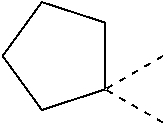





















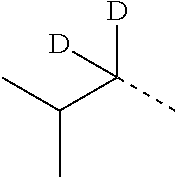
























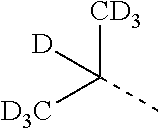






































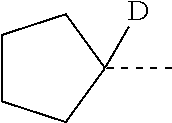














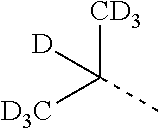
































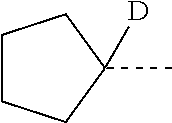







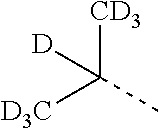























































































































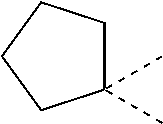



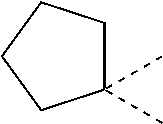




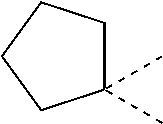

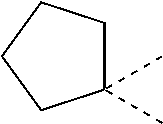














































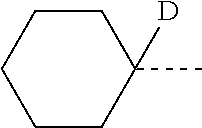


















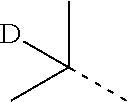























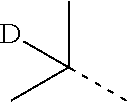








































































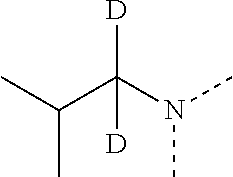








D00000

D00001

D00002

XML
uspto.report is an independent third-party trademark research tool that is not affiliated, endorsed, or sponsored by the United States Patent and Trademark Office (USPTO) or any other governmental organization. The information provided by uspto.report is based on publicly available data at the time of writing and is intended for informational purposes only.
While we strive to provide accurate and up-to-date information, we do not guarantee the accuracy, completeness, reliability, or suitability of the information displayed on this site. The use of this site is at your own risk. Any reliance you place on such information is therefore strictly at your own risk.
All official trademark data, including owner information, should be verified by visiting the official USPTO website at www.uspto.gov. This site is not intended to replace professional legal advice and should not be used as a substitute for consulting with a legal professional who is knowledgeable about trademark law.